The Ultimate Guide to Controlling Corporate Travel Expenses

Travel expenses are the second-highest business expense in most firms, and also one of the toughest to control (toughest, yes, but not impossible). With the amount spent on corporate travel set to soar up to $1.7 trillion globally by 2022, it’s time to work on strategizing your travel expenses.

Let’s say your firm has had many international client meetings, trade shows, and networking events recently. The ROI looks good, and your leads and customers appreciate the face-to-face interaction. While your financial metrics are soaring, something else is increasing too: your corporate travel expenses.
Most CFOs agree that where strategizing travel expenses is concerned, it’s more about cost-saving than cost-cutting. Firms that have been successful in cost-saving begin with planning and implementing well-planned strategies to curb expenses.
It’s important to remember that what works well for one firm might not do the same for yours. In this article, we will walk you through some best practices to control corporate travel expenses like air and ground transportation, accommodation, and meal expenses while maintaining employee satisfaction. You can go through these practices and adopt the ones you think will work well for your firm.
Your travel expenses take off way before the plane does. Plane tickets can be pretty expensive, which is why your travel team should be prudent while booking them. Avoiding business class is one best practice that goes without saying, but here are some other ways you can reduce your air travel expenses:

Book in advance
We’ll begin with the most obvious and the most well-known piece of advice to reduce air fare – book in advance. With airfare increasing by an average of 2.6% in the coming year, last-minute bookings are out of the question. The good news is that most airlines offer comparatively low prices and discounts for flights that are booked in advance.
To make this a practice, your travel team must set a timeline for airline reservations, and make it clear that your employees MUST abide by it. Most firms that have been successful in cutting down business travel expenses have implemented rules where their employees must book their tickets at least 2 weeks in advance.
Don’t stick to one favourite booking website
Encourage your travel team to use websites like Expedia, Travelocity, and Kayak to compare air fares and find the cheapest flights.
Most travellers skip the airline websites themselves, but that’s a rookie mistake! Heading over to the airline’s own website to see if they can cut you a good deal should be one of your standard practices.
Partnering with airlines
Many enterprise-level firms control air travel expenses by partnering with their favourite airline carriers. When you partner with an airline, your employees will get corporate discounts and fly at a negotiated rate. Your employees may also enjoy additional perks like extended deadlines for ticket cancellation, waived ticket cancellation fees, and so on.
Reduce costs by scheduling meetings well
Choosing when your employees travel can cut down a lot more than you’d think. Aside from urgent client meetings, talk to your travel team or in-house event organizers to schedule events and networking sessions during off-seasons. This way, your employees can give expensive peak holiday times a miss.
A not-so-conventional tip
If the number of clients attending the meeting is lesser than the number of employees flying to their place, fly your clients down to your office instead. However, remember to weigh the pros and cons before going ahead with this tip – in some cases, the clients will expect you to handle their accommodation costs as well.
Pay attention to the baggage
Your travel team should emphasize the importance of travelling light to your employees. Smart travellers pack light and avoid packing excess baggage that they might end up paying for (which your travel team could end up reimbursing). Enforce rules in your travel policy to make sure your employees check the size, quantity, and weight of bags allowed on their flight.
If your firm is planning to provide giveaways for a networking event, it can be wise to split them between your employees during travel, instead of piling them all into a single bag and then paying a huge fee for that one overweight bag.
Ground transportation
The travel expenses aren’t over yet. Even after your employees touch down in the destination city, there are ground travel and fuel expenses to manage. Here are some tips your employees can implement (and your travel team can supervise) during their trip:
Think twice before parking your car at the airport’s parking lot
Let’s begin with getting to the airport. Some of your employees may prefer to drive themselves to the airport and leave their vehicles there. They also end up paying a fortune in parking fees, which may or may not be reimbursable, depending upon your travel policy.
If airport parking is a reimbursable expense, here’s a way to reduce your spending on it: encourage your employees to reserve parking through websites that offer discounted parking sites. Premier Parking (in the UK and the US) is one of the best in the business. Other websites like On Air Parking provide the cheapest rates at a number of major airports.
Bundling airfare and cab rental services
To get your employees from the airport to the hotel and vice versa, your travel team can try bundling airfare with cab rental services. It might seem counterintuitive to add this service, like you’re paying extra. But it’s actually cheaper, since the overall price is likely to be much less than booking these services individually.
Your travel team can check travel websites and the respective airline’s website for these bundles. We tried comparing prices, and the fare for flight+car (inclusive of taxes and fees) for a round trip from Dubai to New York cost only $928!
Domestic transportation at the destination
Your travel team can provide your employees with the option to rent a car for the duration of their stay. If your firm offers company insurance, state it clearly in the travel policy so your employees avoid paying for duplicate insurance coverage.
To reduce costs on ground transportation, have your travel team sign up for a corporate Uber account. It offers centralized transportation for your employees, and your travel team can manage multiple rides at a time using the corporate account. More and more firms are moving towards Uber for their travel during business trips because of the cost savings it offers.
Accommodation
Your travel team will tell you how challenging booking hotels for your employees can be. Most hotel rooms are overpriced, and the ones that fit the budget are often not where your employees would be comfortable staying.
Again, booking in advance comes in handy and saves big bucks. In addition to early booking, there are few more ways your travel team can simultaneously pinch pennies and ensure the comfort of your employees:
Stick to the tried-and-true hotel chains
If your travel team has preferred hotel chains that fit the budget and they regularly book rooms there for your employees, it’s advisable to stick to them! These hotel chains are more likely to cut better deals and offer discounts if you’re a loyal customer.
If your firm is organizing an event or meeting at a hotel, try to accommodate your employees in the same hotel to cut down on transportation back and forth.
Contact multiple hotels before finalizing bulk bookings
Before finalizing bulk bookings, have your travel manager call up a few hotels and give them a price to compete with. You’d be surprised by the deals some hotels are likely to offer. Once you’ve gotten prices for all of them, you can select the hotel that offers the best price from the lot.
Dos and don’ts during the stay
Educate your employees about your company’s dos and don’ts for their stay at the hotel. For instance, you can ensure that mini-bar services are not covered by the firm by including a clear and specific rule in the travel policy. Your travel team can also advise your employees to limit room service and avoid hotel restaurants since they tend to be pricier.
Since the cost of food varies geographically, it’s advisable for your travel team to do some research on the city your employees are visiting and set a budget for meals based on real prices.
Providing per diems to your employees
Per diems are usually split into meals, accommodation, transportation, and incidentals. Offering per diems can help set limits around meal spending as opposed to reimbursing your employees for their actual meal expenses. One thing a per diem does is make the spending limits more real to the employee, since they’re not expecting a magical future infusion of cash to fix any missteps they make.
Accepting complimentary meals and knowing where to dine
Have your travel team train your employees to check restaurant menus along with the prices before going out to eat, so they can see which ones will fit within their budget.
Also, if the travel team is booking hotels that provide complimentary breakfasts, you can eliminate the meal reimbursement for breakfast. One employee saving $10-$20 by accepting a complimentary breakfast will add up and save your firm thousands of dollars in the long run.
Here’s one more quick tip: If you or your employees are taking your clients out for a meal, it’s less expensive to schedule a lunch meeting instead of a dinner!
A little appreciation goes a long way!
To help you succeed in cutting down on travel expenses, you can offer incentives to employees who save funds on business trips. If you think about it from the employees’ point of view, they would rather travel in extra comfort instead of saving money, since they’re not really spending from their own pockets (and even if they are spending from their own pockets, they will eventually get reimbursed). So they don’t have much motivation to save money. This is why some firms are coming up with incentive plans that let employees keep a percentage of the cost savings from the trip.
For example, Google has come up with an effective incentive policy where the company splits the unspent allotment from each trip with the employee. So, if an employee was given a limit of $1000 for accommodation and they managed to do it for $800, then they would receive a credit of $100. They can use this credit to get upgrades on their air or hotel accommodation on the next business trip.
Also, some firms offer a percentage of their per diems to the employees for their personal spending. The employees can choose to spend the money during the business trip, or return it to their firm, where the amount will be credited to their account. Either way, the employee gets to pocket a little bit of money as a reward for helping the company save.
Here’s your takeaway!
Implementing these practices in your firm is a great way to start to control your corporate travel expenses. Even if you already have an effective travel policy in place, you still may feel like you can’t cut down certain travel expenses. That’s where these best practices will help. It may seem like they only make a marginal difference, but on the whole, you will end up saving a lot.
The key goal is to save funds by cutting down unnecessary costs without causing inconvenience to your employees. With proper planning and implementation of the right practices, you can offer the best travel experience to your employees at a lower cost to the company.
One of the best practices to controlling employee spend is investing in an expense management system. By automating most processes, you can eliminate paperwork and spreadsheets, reduce admin work, and accelerate expense reporting. This is where Zoho Expense can help your firm.
Zoho Expense is online expense reporting software, tailor-made for businesses worldwide to automate expense report creation, streamline approvals, and make swift reimbursements. Try Zoho Expense for free today to improve your firm’s compliance rates and remove fraudulent expenses from the picture.
Related Posts
- 6 reasons why you should automate your expense management processes
- How to Create an Effective Corporate Travel Policy to Increase Compliance
Cancel reply
This site uses Akismet to reduce spam. Learn how your comment data is processed .
Can I please get help
Hi Lisa, Please let me know how I can assist you.
You might also like
Make your expense reporting effortless. try zoho expense today.

Interactive visualization requires JavaScript
Related research and data
- COVID-19: International and Domestic Travel
- Policy Responses to the Coronavirus Pandemic
- Are children eligible for COVID-19 vaccination?
- Biweekly change in confirmed COVID-19 cases
- Biweekly change in confirmed COVID-19 deaths
- Biweekly confirmed COVID-19 cases
- Biweekly confirmed COVID-19 cases per million people
- Biweekly confirmed COVID-19 deaths
- Biweekly confirmed COVID-19 deaths per million people
- COVID-19 Containment and Health Index
- COVID-19 testing policies
- COVID-19 vaccination policy
- COVID-19 vaccinations vs. COVID-19 deaths
- COVID-19 vaccine boosters administered
- COVID-19 vaccine boosters administered per 100 people
- COVID-19 vaccine doses administered by manufacturer
- COVID-19 vaccine doses administered per 100 people, by income group
- COVID-19 vaccine doses donated to COVAX
- COVID-19 vaccine doses donated to COVAX, per capita
- COVID-19 vaccine doses donated to COVAX, per dose administered
- COVID-19 vaccine doses donated to COVAX, per million dollars of GDP
- COVID-19: Daily tests vs. daily new confirmed cases
- COVID-19: Daily tests vs. daily new confirmed cases per million
- COVID-19: Where are the world's unvaccinated people?
- Cancellation of public events during COVID-19 pandemic
- Chile: COVID-19 weekly death rate by vaccination status
- Confirmed COVID-19 deaths per million vs. GDP per capita
- Cumulative confirmed COVID-19 cases and deaths
- Cumulative confirmed COVID-19 cases by world region By Region
- Cumulative confirmed COVID-19 deaths by world region
- Cumulative confirmed COVID-19 deaths vs. cases
- Daily COVID-19 tests
- Daily COVID-19 tests per 1,000 people Rolling 7-day average
- Daily COVID-19 vaccine doses administered
- Daily and total confirmed COVID-19 deaths
- Daily confirmed COVID-19 cases by world region Stacked area chart – by world region
- Daily confirmed COVID-19 deaths by world region
- Daily new confirmed COVID-19 cases and deaths
- Daily new confirmed COVID-19 deaths in Sweden
- Daily new estimated COVID-19 infections from the ICL model
- Daily new estimated COVID-19 infections from the IHME model
- Daily new estimated COVID-19 infections from the LSHTM model
- Daily new estimated COVID-19 infections from the YYG model
- Daily new estimated infections of COVID-19
- Daily share of the population receiving a COVID-19 vaccine dose
- Daily vs. total confirmed COVID-19 cases per million people
- Debt or contract relief during the COVID-19 pandemic
- Economic decline in the second quarter of 2020
- Economic decline in the second quarter of 2020 vs. confirmed COVID-19 cases per million people
- Economic decline in the second quarter of 2020 vs. total confirmed COVID-19 deaths (as of August 2020)
- England: COVID-19 monthly death rate by vaccination status
- Estimated cumulative excess deaths during COVID Faceted Explorer version
- Estimated cumulative excess deaths during COVID, from the WHO
- Estimated cumulative excess deaths during COVID-19 Non-Explorer, single-entity version
- Estimated cumulative excess deaths per 100,000 people during COVID, from The Economist
- Estimated cumulative excess deaths, from The Economist and the WHO
- Estimated daily excess deaths during COVID Faceted Explorer version
- Estimated daily excess deaths during COVID Non-Explorer, single-entity version
- Estimated daily excess deaths per 100,000 people during COVID, from The Economist
- Excess mortality: Cumulative deaths from all causes compared to projection based on previous years Absolute deaths
- Excess mortality: Cumulative deaths from all causes compared to projection based on previous years Percentage
- Excess mortality: Cumulative deaths from all causes compared to projection based on previous years, per million people
- Excess mortality: Deaths from all causes compared to average over previous years P-scores, average baseline
- Excess mortality: Deaths from all causes compared to average over previous years, by age P-scores, average baseline
- Excess mortality: Deaths from all causes compared to projection P-scores, projected baseline
- Excess mortality: Deaths from all causes compared to projection based on previous years, by age P-scores, projected baseline
- Excess mortality: Raw number of deaths from all causes compared to projection based on previous years Raw death counts, stacked years
- Excess mortality: Raw number of deaths from all causes compared to projection based on previous years Raw death counts, extended series
- Face covering policies during the COVID-19 pandemic
- Grocery and pharmacy stores: How did the number of visitors change relative to before the pandemic?
- How did the number of visitors change since the beginning of the pandemic?
- How do key COVID-19 metrics compare to the early 2021 peak in Israel?
- How do key COVID-19 metrics compare to the early 2021 peak in Spain?
- How do key COVID-19 metrics compare to the early 2021 peak?
- Income support during the COVID-19 pandemic
- Number of COVID-19 patients in ICU per million
- Number of COVID-19 patients in hospital
- Number of COVID-19 patients in hospital per million
- Number of COVID-19 patients in intensive care (ICU)
- Number of people who completed the initial COVID-19 vaccination protocol
- Parks and outdoor spaces: How did the number of visitors change relative to before the pandemic?
- Public information campaigns on the COVID-19 pandemic
- Public transport closures during the COVID-19 pandemic
- Residential areas: How did the time spent at home change relative to before the pandemic?
- Restrictions on internal movement during the COVID-19 pandemic
- Restrictions on public gatherings in the COVID-19 pandemic
- Retail and recreation: How did the number of visitors change relative to before the pandemic?
- SARS-CoV-2 sequences by variant
- SARS-CoV-2 variants in analyzed sequences
- School closures during the COVID-19 pandemic
- Share of SARS-CoV-2 sequences that are the delta variant
- Share of SARS-CoV-2 sequences that are the omicron variant
- Share of global daily COVID-19 vaccine doses administered as boosters
- Share of people who completed the initial COVID-19 vaccination protocol
- Share of people who completed the initial COVID-19 vaccination protocol by age
- Share of people who received at least one dose of COVID-19 vaccine Line chart
- Share of people with a COVID-19 booster dose by age
- Share of people with at least one dose of COVID-19 vaccine by age
- Share of total COVID-19 tests that were positive
- Stay-at-home requirements during the COVID-19 pandemic
- Sweden: Daily new confirmed COVID-19 deaths, by date of death
- Switzerland: COVID-19 weekly death rate by vaccination status
- Tests and new confirmed COVID-19 cases per day
- Tests conducted per new confirmed case of COVID-19
- The share of COVID-19 tests that are positive
- Total COVID-19 tests Line chart
- Total COVID-19 tests conducted vs. confirmed cases
- Total COVID-19 tests conducted vs. confirmed cases per million
- Total COVID-19 tests per 1,000 people Line chart
- Total COVID-19 tests per 1,000 vs. GDP per capita
- Total COVID-19 tests per confirmed case Bar chart
- Total COVID-19 vaccine doses administered
- Total COVID-19 vaccine doses administered per 100 people
- Total confirmed COVID-19 cases vs. deaths per million
- Total confirmed COVID-19 cases, by source
- Total confirmed COVID-19 deaths and cases per million people
- Total confirmed deaths due to COVID-19 vs. population
- Total confirmed deaths from COVID-19, by source
- Total number of people who received at least one dose of COVID-19 vaccine
- Transit stations: How did the number of visitors change relative to before the pandemic?
- UK: Cumulative confirmed COVID-19 deaths per 100,000
- UK: Daily new confirmed COVID-19 cases
- UK: Daily new confirmed COVID-19 cases per 100,000
- UK: Daily new confirmed COVID-19 deaths
- UK: Daily new hospital admissions for COVID-19
- UK: Number of COVID-19 patients in hospital
- UK: Share of COVID-19 tests that are positive
- US: Daily COVID-19 vaccine doses administered
- US: Daily COVID-19 vaccine doses administered per 100 people
- US: Number of people who completed the initial COVID-19 vaccination protocol
- US: Number of people who received at least one dose of COVID-19 vaccine
- US: Share of available COVID-19 vaccine doses that have been used
- US: Share of people who completed the initial COVID-19 vaccination protocol
- US: Share of people who received at least one dose of COVID-19 vaccine
- US: Total COVID-19 vaccine doses administered
- US: Total COVID-19 vaccine doses administered per 100 people
- US: Total COVID-19 vaccine doses distributed
- US: Total COVID-19 vaccine doses distributed per 100 people
- United States: COVID-19 weekly death rate by vaccination status
- Week by week change in confirmed COVID-19 cases
- Week by week change of confirmed COVID-19 deaths
- Weekly confirmed COVID-19 cases
- Weekly confirmed COVID-19 cases per million people
- Weekly confirmed COVID-19 deaths
- Weekly confirmed COVID-19 deaths per million people
- Weekly new ICU admissions for COVID-19
- Weekly new ICU admissions for COVID-19 per million
- Weekly new hospital admissions for COVID-19
- Weekly new hospital admissions for COVID-19 per million
- What is the youngest age group eligible for COVID-19 vaccination?
- Which countries do COVID-19 contact tracing?
- Willingness to get vaccinated against COVID-19 by month
- Workplace closures during the COVID-19 pandemic
- Workplaces: How did the number of visitors change relative to before the pandemic?
Our World in Data is free and accessible for everyone.
Help us do this work by making a donation.
Jump to navigation
- Bahasa Malaysia

Can international travel-related control measures contain the spread of the COVID-19 pandemic?
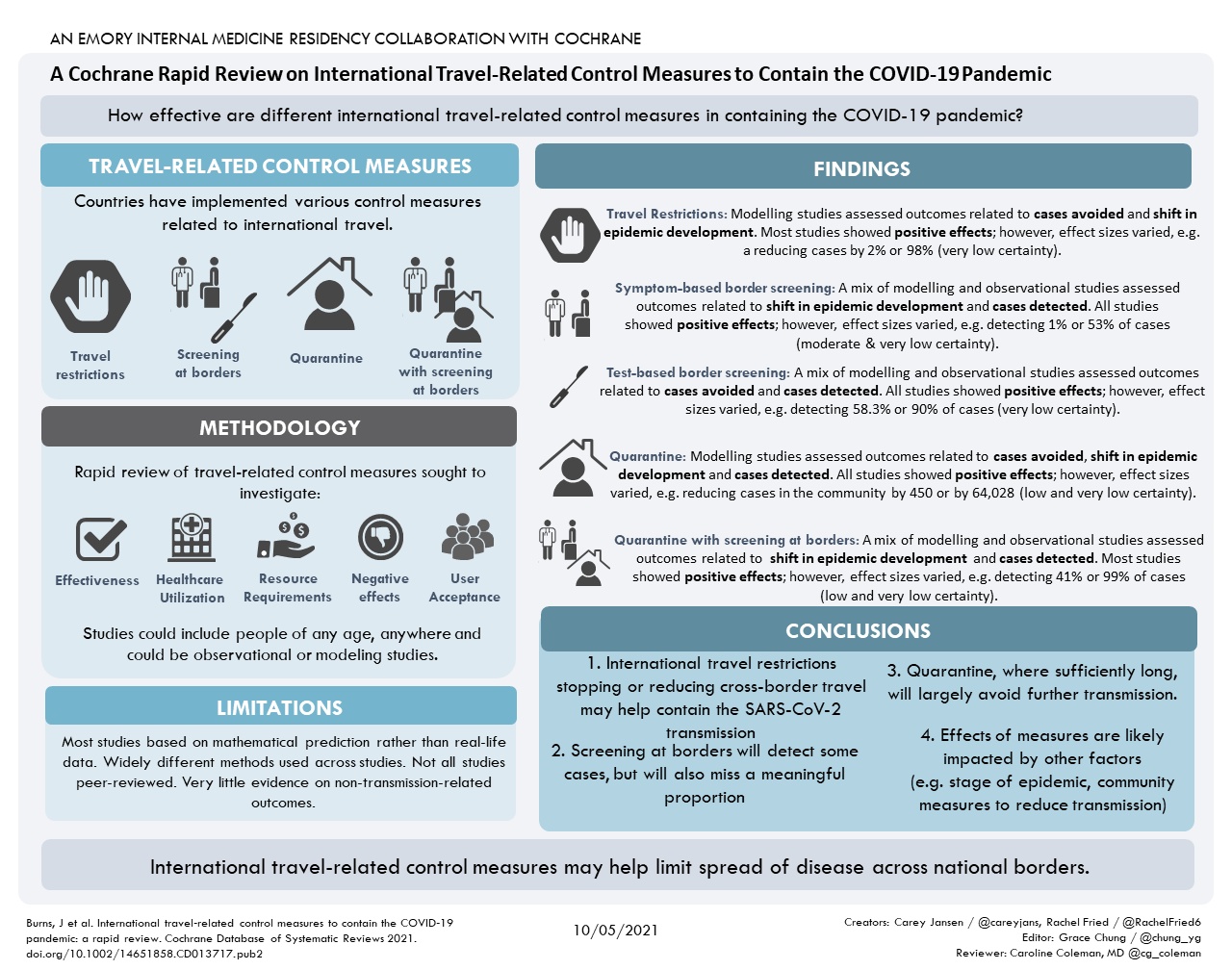
What are international travel-related control measures?
International travel control measures are methods to manage international travel to contain the spread of COVID-19. Measures include:
- closing international borders to stop travellers crossing from one country to another;
- restricting travel to and from certain countries, particularly those with high infection levels;
- screening or testing travellers entering or leaving a country if they have symptoms or have been in contact with an infected person;
- quarantining newly-arrived travellers from another country, that is, requiring travellers to stay at home or in a specific place for a certain time.
What did we want to find out?
We wanted to find out how effective international travel-related control measures are in containing the COVID-19 pandemic.
What we did
We searched for studies on the effects of these measures on the spread of COVID-19. Studies had to report how many cases these measures prevented or detected, or whether they changed the course of the pandemic. The studies could include people of any age, anywhere. They could be of any design including those that used ‘real-life’ data (observational studies) or hypothetical data from computer-generated simulations (modelling studies).
This is the first update of our review. This update includes only studies on COVID-19, published up to 13 November 2020.
What we found
We found 62 studies. Most (49 studies) were modelling studies; only 13 used real-life data (observational studies). Studies took place across the world and at different times during the pandemic. Levels of COVID-19 within countries varied.
Most studies compared current travel-related control measures with no travel-related controls. However, some modelling studies also compared current measures against possible measures, for example, to see what might happen if controls were more or less relaxed or were combined with other measures.
Main results
Below we summarise the findings of some outcomes.
Travel restrictions reducing or stopping cross-border travel (31 modelling studies)
Most studies showed that travel restrictions reducing or stopping cross-border travel were beneficial, but this beneficial effect ranged from small to large. Additionally, some studies found no effect. Studies also predicted that these restrictions would delay the outbreak, but the delay ranged from one day to 85 days in different studies.
Screening at borders (13 modelling studies and 13 observational studies)
These studies assessed screening at borders, including screening people with symptoms or who had potentially been exposed to COVID-19, or testing people, before or after they travelled.
For screening based on symptoms or potential exposure to COVID-19, modelling studies found that screening reduced imported or exported cases and delayed outbreaks. Modelling studies predicted that 1% to 53% of cases would be detected. Observational studies reported a wide range of cases detected, from 0% to 100%, with the majority of studies reporting less than 54% of cases detected.
For screening based on testing, studies reported that testing travellers reduced imported or exported cases, and cases detected. Observational studies reported that the proportion of cases detected varied from 58% to 90%. This variation might be due to the timing of testing.
Quarantine (12 modelling studies)
All studies suggested that quarantine may be beneficial, but the size of this effect ranged from small to large in the different studies. Modelling studies, for example, predicted that quarantine could lead to between 450 and over 64,000 fewer cases in the community. Differences in effects may depend on how long people were quarantined for and how well they followed the rules.
Quarantine and screening at borders (7 modelling studies and 4 observational studies)
For quarantine and screening at borders, most studies suggested some benefit, however the size of this effect differed between studies. For example, observational studies reported that between 68% and 92% of cases would be detected. Differences in effects may depend on how long people were quarantined for and how often they were tested while in quarantine.
How reliable are these results?
Our confidence in these results is limited. Most studies were based on mathematical predictions (modelling), so we lack real-life evidence. Further, we were not confident that models used correct assumptions, so our confidence in the evidence on travel restrictions and quarantine, in particular, is very low. Some studies were published quickly online as ‘preprints’. Preprints do not undergo the normal rigorous checks of published studies, so we are not certain how reliable they are. Also, the studies were very different from each other and their results varied according to the specification of each travel measure (e.g. the type of screening approach), how it was put into practice and enforced, the amount of cross-border travel, levels of community transmission and other types of national measures to control the pandemic.
What this means
Overall, international travel-related control measures may help to limit the spread of COVID-19 across national borders. Restricting cross-border travel can be a helpful measure. Screening travellers only for symptoms at borders is likely to miss many cases; testing may be more effective but may also miss cases if only performed upon arrival. Quarantine that lasts at least 10 days can prevent travellers spreading COVID-19 and may be more effective if combined with another measure such as testing, especially if people follow the rules.
Future research needs to be better reported. More studies should focus on real-life evidence, and should assess potential benefits and risks of travel-related control measures to individuals and society as a whole.
With much of the evidence derived from modelling studies, notably for travel restrictions reducing or stopping cross-border travel and quarantine of travellers, there is a lack of 'real-world' evidence. The certainty of the evidence for most travel-related control measures and outcomes is very low and the true effects are likely to be substantially different from those reported here. Broadly, travel restrictions may limit the spread of disease across national borders. Symptom/exposure-based screening measures at borders on their own are likely not effective; PCR testing at borders as a screening measure likely detects more cases than symptom/exposure-based screening at borders, although if performed only upon arrival this will likely also miss a meaningful proportion of cases. Quarantine, based on a sufficiently long quarantine period and high compliance is likely to largely avoid further transmission from travellers. Combining quarantine with PCR testing at borders will likely improve effectiveness. Many studies suggest that effects depend on factors, such as levels of community transmission, travel volumes and duration, other public health measures in place, and the exact specification and timing of the measure. Future research should be better reported, employ a range of designs beyond modelling and assess potential benefits and harms of the travel-related control measures from a societal perspective.
In late 2019, the first cases of coronavirus disease 2019 (COVID-19) were reported in Wuhan, China, followed by a worldwide spread. Numerous countries have implemented control measures related to international travel, including border closures, travel restrictions, screening at borders, and quarantine of travellers.
To assess the effectiveness of international travel-related control measures during the COVID-19 pandemic on infectious disease transmission and screening-related outcomes.
We searched MEDLINE, Embase and COVID-19-specific databases, including the Cochrane COVID-19 Study Register and the WHO Global Database on COVID-19 Research to 13 November 2020.
We considered experimental, quasi-experimental, observational and modelling studies assessing the effects of travel-related control measures affecting human travel across international borders during the COVID-19 pandemic. In the original review, we also considered evidence on severe acute respiratory syndrome (SARS) and Middle East respiratory syndrome (MERS). In this version we decided to focus on COVID-19 evidence only. Primary outcome categories were (i) cases avoided, (ii) cases detected, and (iii) a shift in epidemic development. Secondary outcomes were other infectious disease transmission outcomes, healthcare utilisation, resource requirements and adverse effects if identified in studies assessing at least one primary outcome.
Two review authors independently screened titles and abstracts and subsequently full texts. For studies included in the analysis, one review author extracted data and appraised the study. At least one additional review author checked for correctness of data. To assess the risk of bias and quality of included studies, we used the Quality Assessment of Diagnostic Accuracy Studies (QUADAS-2) tool for observational studies concerned with screening, and a bespoke tool for modelling studies. We synthesised findings narratively. One review author assessed the certainty of evidence with GRADE, and several review authors discussed these GRADE judgements.
Overall, we included 62 unique studies in the analysis; 49 were modelling studies and 13 were observational studies. Studies covered a variety of settings and levels of community transmission.
Most studies compared travel-related control measures against a counterfactual scenario in which the measure was not implemented. However, some modelling studies described additional comparator scenarios, such as different levels of stringency of the measures (including relaxation of restrictions), or a combination of measures.
Concerns with the quality of modelling studies related to potentially inappropriate assumptions about the structure and input parameters, and an inadequate assessment of model uncertainty. Concerns with risk of bias in observational studies related to the selection of travellers and the reference test, and unclear reporting of certain methodological aspects.
Below we outline the results for each intervention category by illustrating the findings from selected outcomes.
The studies assessed cases avoided and shift in epidemic development. We found very low-certainty evidence for a reduction in COVID-19 cases in the community (13 studies) and cases exported or imported (9 studies). Most studies reported positive effects, with effect sizes varying widely; only a few studies showed no effect.
There was very low-certainty evidence that cross-border travel controls can slow the spread of COVID-19. Most studies predicted positive effects, however, results from individual studies varied from a delay of less than one day to a delay of 85 days; very few studies predicted no effect of the measure.
Screening at borders (13 modelling studies; 13 observational studies)
Screening measures covered symptom/exposure-based screening or test-based screening (commonly specifying polymerase chain reaction (PCR) testing), or both, before departure or upon or within a few days of arrival. Studies assessed cases avoided, shift in epidemic development and cases detected. Studies generally predicted or observed some benefit from screening at borders, however these varied widely.
For symptom/exposure-based screening, one modelling study reported that global implementation of screening measures would reduce the number of cases exported per day from another country by 82% (95% confidence interval (CI) 72% to 95%) (moderate-certainty evidence). Four modelling studies predicted delays in epidemic development, although there was wide variation in the results between the studies (very low-certainty evidence). Four modelling studies predicted that the proportion of cases detected would range from 1% to 53% (very low-certainty evidence). Nine observational studies observed the detected proportion to range from 0% to 100% (very low-certainty evidence), although all but one study observed this proportion to be less than 54%.
For test-based screening, one modelling study provided very low-certainty evidence for the number of cases avoided. It reported that testing travellers reduced imported or exported cases as well as secondary cases. Five observational studies observed that the proportion of cases detected varied from 58% to 90% (very low-certainty evidence).
The studies assessed cases avoided, shift in epidemic development and cases detected. All studies suggested some benefit of quarantine, however the magnitude of the effect ranged from small to large across the different outcomes (very low- to low-certainty evidence). Three modelling studies predicted that the reduction in the number of cases in the community ranged from 450 to over 64,000 fewer cases (very low-certainty evidence). The variation in effect was possibly related to the duration of quarantine and compliance.
Quarantine and screening at borders (7 modelling studies; 4 observational studies)
The studies assessed shift in epidemic development and cases detected. Most studies predicted positive effects for the combined measures with varying magnitudes (very low- to low-certainty evidence). Four observational studies observed that the proportion of cases detected for quarantine and screening at borders ranged from 68% to 92% (low-certainty evidence). The variation may depend on how the measures were combined, including the length of the quarantine period and days when the test was conducted in quarantine.
Log in using your username and password
- Search More Search for this keyword Advanced search
- Latest content
- For authors
- Browse by collection
- BMJ Journals More You are viewing from: Google Indexer
You are here
- Volume 11, Issue 4
- Travel-related control measures to contain the COVID-19 pandemic: an evidence map
- Article Text
- Article info
- Citation Tools
- Rapid Responses
- Article metrics
- http://orcid.org/0000-0003-0258-8912 Ani Movsisyan 1 , 2 ,
- http://orcid.org/0000-0003-4015-6862 Jacob Burns 1 , 2 ,
- Renke Biallas 1 , 2 ,
- Michaela Coenen 1 , 2 ,
- Karin Geffert 1 , 2 ,
- Olaf Horstick 3 ,
- Irma Klerings 4 ,
- http://orcid.org/0000-0001-5038-8072 Lisa Maria Pfadenhauer 1 , 2 ,
- http://orcid.org/0000-0001-7059-6944 Peter von Philipsborn 1 , 2 ,
- Kerstin Sell 1 , 2 ,
- Brigitte Strahwald 1 , 2 ,
- Jan M Stratil 1 , 2 ,
- Stephan Voss 1 , 2 ,
- Eva Rehfuess 1 , 2
- 1 Institute for Medical Information Processing, Biometry and Epidemiology , Ludwig Maximilians University Munich , Munich , Germany
- 2 Pettenkofer School of Public Health , Ludwig Maximilians University Munich , Munich , Germany
- 3 Heidelberg Institute of Global Health , Heidelberg University , Heidelberg , Germany
- 4 Department for Evidence-based Medicine and Evaluation , Danube University Krems , Krems , Austria
- Correspondence to Dr Ani Movsisyan; ani.movsisyan{at}ibe.med.uni-muenchen.de
Objectives To comprehensively map the existing evidence assessing the impact of travel-related control measures for containment of the SARS-CoV-2/COVID-19 pandemic.
Design Rapid evidence map.
Data sources MEDLINE, Embase and Web of Science, and COVID-19 specific databases offered by the US Centers for Disease Control and Prevention and the WHO.
Eligibility criteria We included studies in human populations susceptible to SARS-CoV-2/COVID-19, SARS-CoV-1/severe acute respiratory syndrome, Middle East respiratory syndrome coronavirus/Middle East respiratory syndrome or influenza. Interventions of interest were travel-related control measures affecting travel across national or subnational borders. Outcomes of interest included infectious disease, screening, other health, economic and social outcomes. We considered all empirical studies that quantitatively evaluate impact available in Armenian, English, French, German, Italian and Russian based on the team’s language capacities.
Data extraction and synthesis We extracted data from included studies in a standardised manner and mapped them to a priori and (one) post hoc defined categories.
Results We included 122 studies assessing travel-related control measures. These studies were undertaken across the globe, most in the Western Pacific region (n=71). A large proportion of studies focused on COVID-19 (n=59), but a number of studies also examined SARS, MERS and influenza. We identified studies on border closures (n=3), entry/exit screening (n=31), travel-related quarantine (n=6), travel bans (n=8) and travel restrictions (n=25). Many addressed a bundle of travel-related control measures (n=49). Most studies assessed infectious disease (n=98) and/or screening-related (n=25) outcomes; we found only limited evidence on economic and social outcomes. Studies applied numerous methods, both inferential and descriptive in nature, ranging from simple observational methods to complex modelling techniques.
Conclusions We identified a heterogeneous and complex evidence base on travel-related control measures. While this map is not sufficient to assess the effectiveness of different measures, it outlines aspects regarding interventions and outcomes, as well as study methodology and reporting that could inform future research and evidence synthesis.
- public health
- infectious diseases
- diabetic foot
Data availability statement
All data relevant to the study are included in the article or uploaded as supplementary information. No original data were generated for this study. All studies included in the evidence map are presented in the supplementary file.
This is an open access article distributed in accordance with the Creative Commons Attribution 4.0 Unported (CC BY 4.0) license, which permits others to copy, redistribute, remix, transform and build upon this work for any purpose, provided the original work is properly cited, a link to the licence is given, and indication of whether changes were made. See: https://creativecommons.org/licenses/by/4.0/ .
https://doi.org/10.1136/bmjopen-2020-041619
Statistics from Altmetric.com
Request permissions.
If you wish to reuse any or all of this article please use the link below which will take you to the Copyright Clearance Center’s RightsLink service. You will be able to get a quick price and instant permission to reuse the content in many different ways.
Strengths and limitations of this study
We applied systematic and standardised methods at all stages and have produced a comprehensive evidence map of travel-related control measures for containment of the SARS-CoV-2/COVID-19 pandemic.
For title/abstract and full-text screening, we developed guidance documents and conducted piloting exercises to ensure consistency among review authors; we additionally collected and clarified all uncertainties on a rolling basis through daily team calls.
We conducted searches in three major health-related databases and two COVID-specific databases; however, it is likely that most studies assessing economic and social outcomes are found in other databases.
The unspecific and inconsistent reporting of primary studies with regard to interventions, especially when a package of control measures was investigated, meant that determining eligibility, as well as summarising and mapping these studies, was challenging.
We did not include travel warning or travel advice in the evidence map, which limits the scope of this map.
Introduction
In December 2019, the occurrence of the SARS-CoV-2 was reported in Wuhan, China. Over the next weeks, the virus and the associated respiratory disease referred to as COVID-19 spread further into China and other parts of Asia including Japan, South Korea and Thailand. 1 By mid-March 2020, when the WHO declared COVID-19 a global pandemic, cases had been observed in over 100 countries and territories across the globe. 2
According to WHO, various travel-related control measures, such as entry/exit screening, travel bans to and/or from specific areas within or between countries, and quarantine of travellers have since been implemented by most countries around the world to contain and mitigate the spread of SARS-CoV-2 and COVID-19. 3 Following the early-stage responses in Asian countries, strict measures, such as border closures and drastic reductions in airline travel, have been put into place in most countries around the world, starting in February 2020 and continuing into May 2020. While in the context of a rapidly evolving pandemic decisions often need to be made even in the absence of high quality evidence, efforts to identify and synthesise the best available evidence will help inform whether the currently implemented measures should be sustained, adapted or lifted. Where possible, decisions need to be based on evidence regarding the effectiveness of these measures in contributing to the control of the pandemic, as well as regarding the associated economic and social impacts. They will also need to take into account short-term and longer term costs, acceptability and feasibility of such measures.
Travel-related control measures have been assessed through systematic or narrative reviews in the context of previous epidemics and pandemics, such as influenza, severe acute respiratory syndrome (SARS-CoV-1/SARS) and Middle East respiratory syndrome (MERS-CoV/MERS). Regarding the containment of influenza, these reviews have examined the effectiveness of a broad set of measures, 4–6 as well as the effectiveness of specific measures, such as entry/exit screening 6 7 ; they have also assessed the economic implications of various pharmaceutical and non-pharmaceutical interventions during influenza pandemics. 8 9 Effectiveness of measures, such as international travel bans and entry/exit screening, have also been examined in reviews of SARS and MERS. 7 10 To date and to the best of our knowledge, the evidence on travel-related control measures for the control of the current pandemic has not been systematically assessed.
In this paper, we aim to systematically identify and map the existing evidence assessing the impact of travel-related control measures (ie, border closures, travel restrictions and bans, entry and exit screening, quarantine/isolation of travellers crossing borders and multiple interventions combined) for containment of the SARS-CoV-2/COVID-19 pandemic, drawing on evidence from the current pandemic, as well as on evidence in relation to SARS, MERS and influenza. This evidence map was commissioned by the WHO to serve as an important resource for researchers and policymakers in providing an overview of the currently available evidence in relation to various travel-related control measures to contain the COVID-19 pandemic. In itself, the evidence map is not sufficient to assess the effectiveness of different measures. Instead, it provides an important basis for decisions regarding the need for and possibility to conduct primary research as well as more specific evidence synthesis (eg, regarding a specific category of control measures or a specific type of studies).
Search strategy
We designed the evidence map in accordance with the Preferred Reporting Items for Systematic Reviews and Meta-Analyses extension for Scoping Reviews (PRISMA-ScR) reporting guideline, and implemented the entire project within ten days (see online supplemental file S1 ) for the completed PRISMA-ScR checklist). We searched the following databases: (1) Ovid MEDLINE ALL (1946–present); (2) Embase.com (Elsevier); (3) Science Citation Index Expanded (1900–present), Social Sciences Citation Index (1900–present) and Emerging Sources Citation Index (2015–present) (Web of Science); (4) the US Centers for Disease Control and Prevention’s COVID-19 Research Articles Downloadable Database (includes published articles, as well as grey literature, such as preprints) and (5) WHO COVID-19 Database (includes published articles only).
Supplemental material
The initial search strategy was developed for MEDLINE (see online supplemental file S2 ) and further adapted for the other databases. All database searches were conducted up to 3 May 2020. The search strategies were designed and conducted by an experienced information specialist. The searches were conducted in English. Where database functionality allowed for it, we limited the search results to Armenian, English, French, German, Italian and Russian, based on the language capacity of the research team and considered studies for inclusion published in all of these languages. We also conducted forward and backward citation searches of all relevant (systematic) reviews identified through the database searches (see online supplemental file S3 ) up to 6 May 2020 in Scopus (Elsevier).
Eligibility criteria
We determined eligibility of studies based on the investigated population/context, intervention, outcome and study type.
Regarding the population/context, this evidence map draws on direct evidence from human populations susceptible to the current SARS-CoV-2/COVID-19, as well as indirect evidence from a set of other relevant respiratory infectious diseases. To help define a set of diseases that is most similar and relevant to COVID-19, we used the following criteria: (1) diseases of viral origin; (2) mode of transmission primarily airborne via droplets/aerosols (as well as person to person); (3) acute disease with the potential to cause an epidemic/pandemic; (4) similar clinical features (ie, non-specific febrile illness with the potential to develop into pneumonia and acute respiratory distress syndrome; difficult diagnosis based on clinical features during transmission-relevant phase, including the period prior to symptom development and during early-stage symptoms); and (5) unavailability of a vaccine and/or difficulty to contain an outbreak through vaccination. As a result, we considered:
SARS-CoV-2/COVID-19.
SARS-CoV-1/SARS.
MERS-CoV/MERS.
Studies in all other populations/contexts, including evidence on infectious diseases less relevant to the current SARS-CoV-2/COVID-19 pandemic (eg, avian influenza, Ebola, meningitis, HIV/AIDS, tuberculosis, dengue, plague, cholera, fever, smallpox, measles or Zika virus) were excluded.
Regarding the intervention, we considered travel-related control measures affecting human travel across national or subnational borders, specifically:
Closure of borders (borders closed to entry and/or exit).
Travel bans (suspension of flights, ground crossing, ship itineraries, refusal of entry or travel and visa suspension/denial) between countries and between regions and large cities within countries.
Travel restrictions (ie, varying levels of travel reductions) between countries and between regions and large cities within countries).
Entry/exit screening (eg, temperature measurement, health questionnaire, thermography, physical examination, laboratory tests, passive observation and/or follow-up quarantine) at airports, ports, land borders and train stations.
Quarantine/isolation of travellers from affected regions (at borders, at designated institutions or at home).
Any combination of the above measures and/or with other control measures (eg, combination of border closure and school closure).
All other interventions were excluded. This comprised those not directly related to travel (eg, community-based quarantine, hygiene measures and bans on mass gatherings), those related to the movement of animals or goods, travel warnings or travel advice issued by the WHO or national governments, situations affecting travel but not representing travel-related control measures (eg, school holidays) and those solely concerned with the effectiveness of laboratory tests rather than their implementation as part of an entry/exit screening procedure.
Regarding outcomes, we considered those assessing the quantitative impacts of the interventions on:
Infectious disease outcomes (eg, number/proportion of cases, number/proportion of deaths, time to/delay in epidemic arrival or peak, reproduction number, healthcare demand and utilisation).
Screening outcomes (eg, number/proportion of persons screened and number/proportion of those screened identified as cases).
Other health outcomes (eg, psychosocial impact).
Economic outcomes (eg, travel volumes, costs of measures implemented and losses to different economic sectors).
Social outcomes (eg, stigmatisation/discrimination of foreigners, xenophobia and migration volumes).
All other outcomes, such as those on the human rights and legal implications of interventions, were excluded.
Regarding study types, we considered all types of empirical studies that quantitatively evaluate impact (eg, epidemiological, modelling, simulations and econometric studies). All other study types, including qualitative studies, diagnostic studies focused on test performance and non-empirical studies (eg, commentaries, narrative and systematic reviews) were excluded.
Study selection
After deduplication, all titles and abstracts were screened by one reviewer (shared among several team members), excluding only those studies that were clearly irrelevant. For all studies deemed potentially relevant or unclear at the title/abstract screening stage, one reviewer screened the full text. At this stage, a final decision regarding eligibility was made. We adopted a very inclusive approach: any unclear cases were discussed with a second reviewer, and remaining uncertainties were resolved with involvement of a third reviewer and/or the whole review team. In addition, all studies excluded at the full-text screening stage based on the intervention (ie, not addressing travel-related control measures) were double-checked by a second reviewer to make sure that no relevant studies were excluded.
We used Endnote to manage collection and deduplication of records. For title and abstract screening, we used Rayyan, a web-based application designed for citation screening for systematic reviews. 11 We documented reasons for the exclusion of full texts and reported those using Microsoft Excel.
For both the title/abstract and full-text screening stages, we developed screening guidance forms to ensure that all reviewers screen similarly and consistently. We discussed inconsistencies and challenges encountered within the review team, after having screened approximately 300 titles/abstracts and 50 full texts and subsequently refined the screening guidance. We additionally collected and clarified all uncertainties in screening on a rolling basis. These were discussed in daily online meetings to ensure consistency in screening across multiple reviewers and that any questions and comments were addressed.
Data extraction
One reviewer extracted study characteristics and data into the predefined categories of the data extraction form in Microsoft Excel (see online supplemental file S4 ). The extraction form was pilot-tested in the review team. The following categories were covered by the extraction form: population, setting and context; characterisation of the respiratory pathogen/disease (ie, SARS-CoV-2/COVID-19, SARS CoV-1/SARS, MERS CoV/MERS and influenza), types of interventions (eg, entry/exit screening, border closure, quarantine of travellers and travel bans), comparisons (where available), outcomes of interest (eg, health, economic and social impact) and study designs (eg, epidemiological study and modelling study).
We charted the extracted data based on categories and present findings in a tabular, narrative or graphical manner. Most of these categories were defined a priori, while one category, namely, geographical setting, was adapted post hoc. Specifically, we sought to define, summarise and present clusters of studies based on the pathogen/disease (ie, SARS-CoV-2/COVID-19, SARS-CoV-1/SARS, MERS-CoV/MERS and influenza), type of intervention (border closure, entry/exist screening including follow-up measures, such as isolation of positive cases, travel ban, travel-related quarantine in the absence of entry/exit screening, travel restrictions and multiple travel-related control measures combined), timing of the intervention (ie, early phase, local transmission phase, postpeak phase and unclear phase), outcomes of interest (ie, infectious disease outcomes, screening outcomes, other health outcomes, economic and social outcomes) and study designs (eg, epidemiologic study and modelling study). All data presented in the tables, text and graphics were double-checked by a second reviewer with an emphasis on accuracy in reporting on populations, interventions and outcomes and in relation to consistency of presentation.
Patient and public involvement
Considering the time constraints and the nature of this research (ie, a rapid systematic evidence map), it was conducted without patient and public involvement.
Database searches yielded a total of 4928 unique records. Through snowballing of reviews identified through the database searches, we identified an additional 1700 studies. During the title/abstract screening stage, we excluded 4445 records as clearly irrelevant. We subsequently assessed the full texts of 483 records and excluded another 361 records. Overall, we included 122 studies in this evidence map (see online supplemental file S5 for the full list). Of these, 80 were journal articles, 41 were preprints and 1 was a report. Figure 1 provides an overview of our searching and screening procedures.
- Download figure
- Open in new tab
- Download powerpoint
Flow chart of studies identified and included during different stages of searching and screening.
Characteristics of included studies
The 122 included studies were characterised by substantial heterogeneity in relation to the countries and populations targeted, the diseases addressed, the types of travel-related control measures examined (sometimes assessed against a range of other interventions to contain an epidemic/pandemic) and the numerous outcomes assessed. They comprise both studies that are inferential in nature and studies that are descriptive in nature, varying greatly in the specific methods applied; notably, many of the studies addressing COVID-19 were preprints. We summarise these aspects below and provide a description of each study in table 1 .
- View inline
Countries and settings
Included studies assessed interventions across the globe, including, according to WHO world regions, from the Western Pacific Region (WPR) (n=71), the Southeast Asia region (n=5), the region of the Americas (n=12), the European region (EUR) (n=8), and the African region (AFR) (n=2). None of the studies included in this evidence map was conducted in a country of the Eastern Mediterranean Region (EMR). The specific countries in which interventions were implemented are listed in table 1 (under ‘regions protected by travel related measure’). Several modelling studies looked at hypothetical regions (n=16).
Of the identified interventions, some were implemented in island states (n=24) or in what we define quasi-island states (n=9), such as the UK or Hong Kong, which have limited land borders connected through, for example, a tunnel. Most interventions were implemented in non-island states (n=74). The remaining interventions assessed hypothetical regions, some of which were framed as comparable to island states, while others were more general in their framing and assumptions.
COVID-19 and other relevant respiratory infectious diseases
Included studies assessed the impact of interventions aiming to prevent or slow the transmission of COVID-19 and other infectious respiratory diseases. We identified a large number of studies focusing on COVID-19 (n=59); we also found studies focusing on SARS (n=11), MERS (n=1) and various strains of influenza (n=39). Other studies looked at multiple infectious respiratory diseases (n=5) or a hypothetical infectious disease with COVID-19 relevant properties (n=7).
Figure 2 illustrates how the number of publications concerned with each disease has developed over time and explores where interventions have been implemented. As expected, there has been a rapid burst of research related to COVID-19 travel restrictions in 2020 (panel A), currently consisting mostly of non-peer-reviewed preprints. Research on SARS, MERS and influenza travel restrictions is more spread over time and also clusters around specific outbreaks (eg, SARS 2003; H1N1 influenza 2009) (panel B).
Illustration of the number of studies published over time; the top panel (2002–2020) shows studies focused on SARS, MERS, influenza and hypothetical disease with COVID-19 relevant properties, while the bottom panel (2020) shows studies focused on COVID-19. The specific disease is indicated by the single letter within the circle. Additionally, the colour represents the WHO world region. MERS, Middle East respiratory syndrome; SARS, severe acute respiratory syndrome.
Intervention categories and interventions
The 122 included studies assessed the impact of a wide range of travel-related control measures. We classified these according to broad intervention categories, including border closures (n=3), entry/exit screening (n=31), travel-related quarantine (n=6), travel bans, such as suspension of international flights (n=8), and travel restrictions (n=25).
For travel restrictions, a few studies described imposing restrictions in relation to the mode of travel (eg, restricting air, land or maritime travel); most used the term ‘travel restrictions’ without providing any specification. However, most of the studies in this category were modelling studies, which commonly simulated ‘travel restrictions’ as different percentage reductions in the travel volume (eg, 50% and 90%).
We identified a relatively large number of studies assessing the impact of a bundle of different travel-related control measures (eg, entry/exit screening and quarantining all arriving passengers) (n=49). More than half of these (n=29) assessed the impact of the lockdown of Wuhan (n=29), combining several travel-related measures. We classified all of these studies as assessing multiple travel-related control measures (see online supplemental file S6 ), as it was impossible to identify the specific measures assessed due to lack of reporting.
Figure 3 visualises the body of evidence according to the respective disease, intervention implemented, as well as region in which an intervention was implemented. It becomes clear that the majority of the evidence assesses multiple travel-related control measures to delay or limit the progression of COVID-19. The second largest block of evidence emerges from studies focusing on various influenza strains and the impact of travel restrictions and entry/exit screening.
Overview of the body of evidence showing the frequency of studies investigating the specific diseases (left column), interventions (middle column) and the WHO world regions (right column). MERS, Middle East respiratory syndrome; SARS, severe acute respiratory syndrome.
A critical aspect in relation to the likely impact of travel-related control measures is the timing of implementation. Figure 4 (panel A) visualises during which phase of an epidemic or pandemic different types of interventions addressed by included studies were implemented. With respect to the timing of implementation we distinguish the following:
Early phase: interventions are implemented at a time when there are either no or only singular detected/notified cases (ie, all cases are detected and quarantined). During this phase, imported cases represent the main source of infections.
Local transmission phase: interventions are implemented during more or less widespread human-to-human transmission of the disease. During this phase, local transmission and imported cases represent sources of infections.
Postpeak phase: interventions are implemented during/after successful containment of an initial outbreak/epidemic/pandemic with the possibility of recurrence. During this phase, imported cases may again represent a major source of infections.
Unclear phase: the phase of the outbreak/epidemic/pandemic is not reported or is not directly relevant for implementation of the intervention.
Bubble plots illustrating in included studies (A) during which phase of an epidemic or pandemic different types of interventions were implemented and (B) which intervention categories were assessed against different types of outcomes.
Figure 4 (panel A) shows, for example, that many interventions, especially those comprising multiple measures, are implemented when local transmission of the disease has already been established. Travel restrictions are often employed in the early phase of an epidemic or pandemic while entry/exit screening measures tend to be implemented both in the early stages, as well as throughout the phases of an epidemic or pandemic. Further details on the specific travel-related control measures reported in each included study and their phase of implementation is presented in the online supplemental file S6 .
Outcome categories and outcomes
We considered studies assessing five broad categories of outcomes: infectious disease outcomes, screening outcomes, other health outcomes, economic outcomes and social outcomes. Identified studies, however, largely assessed infectious disease (n=98) and/or screening outcomes (n=25). We identified no studies concerned with other health outcomes and very few studies assessing economic (n=5) or social outcomes (n=1).
Infectious disease outcomes included several types of outcomes related to disease timing and transmission, including the number or proportion of cases, the number or proportion of deaths, the reproduction number, the probability of an epidemic, demand for healthcare resources and the temporal development of the epidemic. Studies assessed various specific outcomes under these broader types, for example, ‘time to epidemic peak’ and ‘delay of epidemic’ both belong to the outcome type ‘temporal development of the epidemic’. Screening outcomes all comprised some form of measuring the number and/or proportion of high-risk persons and/or cases detected. Economic outcomes covered costs and industry impact, and social outcomes examined the acceptability of travel-related control measures. These outcome types as assessed in each study are listed in table 1 . A comprehensive list of the specific outcomes reported for each category and type of outcome and how often these were used across the evidence map can be found in online supplemental file S7 .
Figure 4 (panel B) illustrates which intervention categories were assessed by different outcome categories. Infectious disease outcomes such as the number or proportion of cases, the temporal development of an epidemic and the reproduction number were well represented across all intervention types. Conversely, screening outcomes were assessed primarily with respect to entry/exit screening. The lack of studies assessing economic and social outcomes is also clearly visible.
Study types
We included all studies assessing the quantitative impact of travel-related control measures on infectious disease, screening, economic and social outcomes. As a consequence of this broad scope, included studies employed a range of vastly different approaches drawing from the fields of infectious disease research, epidemiology, economics, biology and mathematics, among others. We categorised each study as being either inferential or descriptive. Most of the studies we found were inferential in nature (n=103), aiming to retrospectively calculate or prospectively forecast the impact of one or multiple travel-related control measures on outcomes. The remaining studies were descriptive in nature (n=19), aiming to describe the impact of control measures through summary statistics and/or graphics.
Within these broad categories, however, included studies varied greatly with regard to the specific approach taken. Inferential studies applied numerous modelling and epidemiological techniques; compartmental models, such as SIR models (S: susceptible, I: infectious, R: recovered) or SIR model derivatives, were common. Several studies also applied spatial models to explore how disease transmission moves geographically. Epidemiological time series models, as well as other epidemiological modelling and testing strategies, were also common. Descriptive studies comprised primarily observational studies and graphical summary studies, both of which measured and reported descriptive summary statistics related to intervention impact. The types of studies illustrated here are not exhaustive, and the methodological boundaries between the approaches employed are sometimes blurry. In fact, several studies apply multiple techniques, combining, for example, compartmental and spatial models or compartmental and time series models. online supplemental file S8 provides a more detailed overview of the study types included, along with examples from the included studies.
Summary of findings
This evidence map provides a comprehensive overview of travel-related control measures available for the control of SARS-CoV-2/COVID-19.
Most of the included studies used infectious disease or epidemiological modelling methods to examine the impact of travel-related control measures on the current COVID-19 pandemic. We also identified studies on SARS-CoV-1/SARS and influenza, mostly undertaken in the context of previous epidemics/pandemics. We found very few studies addressing MERS-CoV/MERS. The identified studies assessing travel-related control measures in the context of SARS-CoV-2/COVID-19, were mostly preprint publications that have not yet undergone peer review and are often characterised by poor reporting and conduct. 12
Studies were undertaken across the globe. The geographical region most represented was WPR, driven in part by a number of studies focusing on the Hubei region of China and in part by studies across the region during the previous SARS-CoV-1/SARS outbreak. AFR and EUR were the least represented; we did not identify any studies from EMR. Most studies operated at the level of countries and reported little about specific settings of interest (eg, a named airport and a specific country border) or the broader implementation context (eg, usual border arrangements when control measures are not in place).
Travel-related control measures can be classified as (1) border closure, (2) travel bans, (3) travel restrictions, (4) entry/exit screening, (5) travel-related quarantine and (6) multiple travel-related control measures. Studies were identified and mapped for all of these categories. We identified a relatively large body of evidence on entry/exit screening, as well as on travel restrictions. The latter also included subnational measures, for example, city-to-city travel restrictions across broader regions, making a clear distinction from general social distancing measures challenging. We also found many studies examining the impact of bundles of travel-related control measures. Interventions are often poorly described, both in relation to the measure itself (eg, border closure) and in relation to how the measure is implemented or enforced (eg, border patrols, fines and exceptions). Moreover, travel-related control measures rarely happen in a vacuum: the closer to real-life the intervention (and the study), the more cointerventions tend to be involved. This makes it very difficult to assess the unique impact of a specific measure.
The impact of travel-related control measures in controlling geographical spread and overall disease transmission likely varies between early, local transmission and postpeak phases of an outbreak/epidemic/pandemic, yet reporting of the timing of implementation tends to be poor. Most studies focused on the early and local transmission phases; few studies were concerned with the postpeak phase.
The identified studies almost exclusively examined infectious disease and screening outcomes. Surprisingly, we did not identify any study reporting on other health outcomes, such as implications for the physical and psychosocial health of stranded travellers, of those unable to visit family members, of regular commuters unable to reach their workplace, of individuals quarantined, of people unable to obtain medical treatment and other collateral damage (eg, suspended immunisation programmes and impacts on food supply due to limited air, maritime and land travel of either people or goods). Only three included studies were concerned with economic and social outcomes.
The bulk of the evidence derives from modelling studies. In an acute outbreak situation, the time and resources that can be dedicated to conducting timely, empirical research are limited. Modelling studies vary greatly in type (eg, SIR-like models vs time series models) and in the underlying assumptions regarding the disease, interventions or regions/settings. Additionally, many studies do not fall into clean categories, and a single study may combine compartmental infectious disease models with epidemiological spatial models. They also vary with respect to whether and how they have been validated through real-life applications.
Gaps in the current evidence base
The evidence map identified several gaps in the evidence base related to travel-related control measures that could inform future research as well as evidence synthesis. First, some regions were under-represented, specifically studies conducted or simulated for the countries in the AFR, EMR and EUR were lacking. Second, the most commonly reported travel-related control measures were entry/exit screening and restrictions, which in the context of modelling studies were simulated as different levels of travel reductions. Thus, the evidence base regarding more stringent measures, such as travel bans and complete border closures, remains sparse. Third, our evidence map identified lack of consideration of the impact of these measures on broader health outcomes, such as physical and mental health, as well as social and economic outcomes, such as cost and burden on communities and socioeconomic inequalities. Finally, the key gap relates to the lack of empirical studies assessing the impact of travel-related control measures, including experimental and quasiexperimental approaches.
Methodological limitations of this study
This evidence map was put together over 10 days, and the process is thus characterised by several limitations.
While we conducted searches in three major databases and two COVID-specific databases, these were mostly health centric. We only searched Web of Science—comprising Science Citation Index Expanded (1900–present), Social Sciences Citation Index (1900–present) and Emerging Sources Citation Index (2015–present)—to identify social and economic studies. As we identified very few economic and social outcomes, it is likely that there is another body of evidence to be located with more focused searches in specific economic and social science databases. In addition, we did not search for grey literature sources. Furthermore, since COVID-19 initially started in Wuhan, China, many studies are published on the topic in Chinese journals and databases. Because of the language barrier, we did not consider these sources.
The unspecific and inconsistent reporting of primary studies with regard to interventions, especially when a package of control measures was investigated, sometimes made inclusion/exclusion decisions difficult. While we developed and calibrated screening guidance to ensure consistency among reviewers, it is nevertheless possible that we excluded some travel-related control measures that were not explicitly described as such. Also, we did not undertake double-screening of all studies but only reassessed a subset of studies excluded at the full-text screening stage. In general, however, we applied a very conservative approach to title/abstract, as well as full-text screening, where any uncertainties associated with a study were marked for further checking by a second reviewer and/or for discussion among the whole review team.
We developed and calibrated data extraction guidance to be used consistently by reviewers. Nevertheless, we had to refine some categories post hoc. We also had a large number of reviewers extracting data, which created heterogeneity in the dataset. To address this, a second reviewer double-checked all extracted information for each of the main domains, that is, all information regarding interventions, outcomes and study design. Overall, high-quality data extraction was limited by poor reporting of the travel-related control measures and the specific contexts in which they are implemented in primary studies. 13
Finally, we did not include travel warning or travel advice in the evidence map, which limits the scope of this map. While these may be classified as travel-related control measures, 13 their inclusion would have likely broadened our search strategy and prolonged the timeline of its development. In general, lack of intervention specification in the included studies makes it challenging to draw clear categories of interventions without potential overlap (eg, drawing clear distinction between a travel ban vs a travel restriction and when these are used only as descriptors in the studies without further specification).
Implications for moving forward
An evidence map is not designed to assess the effectiveness of interventions, in this case the effectiveness of travel-related control measures in controlling infectious disease spread. The present evidence map sheds light on the variety of evidence available with regards to the quantifiable impacts of travel-related control measures, the outcomes used, as well as the study types employed. It thus represents a stepping stone towards a systematic review on the effectiveness of all or a subset of travel-related control measures.
Given our health-centric searches, we feel confident that we have identified most of the available body of evidence regarding the quantifiable impacts of travel-related control measures on health. In terms of conducting a systematic review of effectiveness, it would, however, be advisable to undertake additional forward-backward citation searches and/or similar studies searches with included studies. We identified a number of challenges related to the full analysis of this evidence base. These include: (1) classifying interventions in an appropriate and consistent manner; (2) capturing the details of interventions (eg, components, timing and implementation characteristics) and cointerventions through an analysis of linked sources of evidence; (3) assessing the quality and usefulness of different types of studies ranging from simple observational studies to complex modelling studies; (4) quantitatively synthesising this extremely heterogeneous evidence base; and (5) dealing with the large number of preprint studies and their varying quality. Moving forward with a full analysis, we suggest reviewers plan ahead and develop strategies on how these challenges can be adequately managed. For example, this might entail consideration of external sources of evidence beyond scientific databases, such as governmental websites on the implementation of different travel-related control measures (eg, their timing and duration) and other measures in local contexts. To contain the COVID-19 pandemic, governments have employed a range of public health measures often in a bundle, which challenges assessment of the effectiveness of any single measure, such as a travel ban. It would therefore be important to explicitly document and, where possible, assess various combinations of measures implemented—including those related to travel–in future research.
Importantly, decisions to maintain or stop travel-related control measures are determined by a range of factors beyond effectiveness, including legal and human rights aspects, as well as considerations of broader health, economic and social implications, as well as sociocultural and political acceptability. Gathering evidence about these broader factors in a systematic manner was beyond the scope of the current evidence map; however, such aspects might be important to inform decision making. Future evidence synthesis would therefore require a different scope and a broader search strategy, notably encompassing searches in economics and social science databases, as well as multidisciplinary databases (eg, EconLit, PsycINFO and Scopus).
Acknowledgments
We are grateful to Susan L Norris and Carmen Dolea for their guidance in scoping this evidence map.
- Mateus ALP ,
- Beck CR , et al
- Wong JY , et al
- Mouchtouri VA ,
- Christoforidou EP ,
- An der Heiden M , et al
- Pasquini-Descomps H ,
- Brender N ,
- Pérez Velasco R ,
- Praditsitthikorn N ,
- Wichmann K , et al
- Errett NA ,
- Ouzzani M ,
- Hammady H ,
- Fedorowicz Z , et al
- Glasziou PP ,
- Sanders S ,
- Worsnop CZ ,
- Grépin KA , et al
- Adekunle AI ,
- Meehan M , et al
- Hu Q , et al
- Kobayashi T ,
- Linton NM , et al
- Kutsuna S ,
- van den Driessche P
- Bajardi P ,
- Poletto C ,
- Ramasco JJ , et al
- Banholzer N ,
- van Weenen E ,
- Kratzwald B , et al
- Bolton KJ ,
- Moss R , et al
- Mansoor OD , et al
- Mansoor OD ,
- Baker MG , et al
- Becker NG ,
- Chang M-C ,
- Li Y-A LC-S , et al
- Cheng H-Y ,
- Chinazzi M ,
- Ajelli M , et al
- Chiyomaru K ,
- Ying Zee BC
- Ciofi degli Atti ML ,
- Rizzo C , et al
- Colizza V ,
- Barthelemy M , et al
- Cooper BS ,
- Pitman RJ ,
- Edmunds WJ , et al
- Costantino V ,
- Heslop DJ ,
- MacIntyre C , et al
- Cowling BJ ,
- Ng TWY , et al
- Dandekar R ,
- Barbastathis G
- de Vlas SJ ,
- Cooper BS , et al
- Ediriweera DS ,
- de Silva NR ,
- Malavige GN , et al
- Eichner M ,
- Schwehm M ,
- Wilson N , et al
- Epstein JM ,
- Goedecke DM ,
- Yu F , et al
- Ferguson NM ,
- Cummings DAT ,
- Fraser C , et al
- Flahault A ,
- Coudeville L , et al
- Kaku K , et al
- Germann TC ,
- Longini IM , et al
- Mummah RO , et al
- Gostic KM ,
- Kucharski AJ ,
- Lloyd-Smith JO
- Cao WC , et al
- Gunaratnam PJ ,
- Seale H , et al
- Hoskins RS ,
- Hamidouche M
- Jiang Y , et al
- Bryant JE , et al
- Hollingsworth TD ,
- Anderson RM
- Hossain MP ,
- Junus A , et al. , et al
- Hong J , et al
- Hsieh Y-H ,
- van den Driessche P ,
- Chen CWS , et al
- Yuan Y , et al
- Kernéis S ,
- Boëlle P-Y , et al
- Eckhardt R ,
- Brownstein JS , et al
- Wang HB , et al
- Kraemer MUG ,
- Gutierrez B , et al
- Heish JW , et al
- Ruktanonchai NW ,
- Zhou L , et al
- Cook AR , et al
- Khosrawipour V ,
- Kocbach P , et al
- Cho G , et al
- Liu Q , et al
- Gao H , et al
- Peirlinck M ,
- Sahli Costabal F , et al
- Song S , et al
- Shen H , et al
- Malmberg H ,
- Malone JD ,
- Brigantic R ,
- Muller GA , et al
- Bhatnagar T ,
- Arinaminpathy N , et al
- Marcelino J ,
- Moriarty LF ,
- Plucinski MM ,
- Marston BJ , et al
- Mummert A ,
- Long L-P , et al
- Muraduzzaman AKM ,
- Parveen R , et al
- Nigmatulina KR ,
- Nishiura H ,
- Odendaal WG
- Liu Z , et al
- Ojcius DM ,
- Gao T , et al
- Jankowski M ,
- Szumowski Łukasz , et al
- Trotter CL , et al
- Priest PC ,
- Jennings LC ,
- Duncan AR , et al
- Pullano G ,
- Pinotti F ,
- Valdano E , et al
- Quilty BJ ,
- Diamond C ,
- Liu Y , et al
- Salvatore M ,
- Bhattacharyya R , et al
- Sakaguchi H ,
- Tsunoda M ,
- Wada K , et al
- Spencer J , et al
- Yan X , et al
- Spelta A , et al
- Scalia Tomba G ,
- Zhou Y , et al
- Tang D , et al
- St John RK ,
- de Jong D , et al
- Zhou X , et al
- Tang B , et al. , et al , et al
- Li Y , et al
- Hachiya M ,
- Noda S , et al
- Wang L , et al
- Hsiung CA , et al
- Huang T , et al
- Moghadas SM , et al
- Wilder-Smith A ,
- MacIntyre CR ,
- Raina MacIntyre C , et al
- Wang K , et al
- Li F , et al. , et al
- Cauchemez S ,
- Donnelly CA , et al
- Hossain MP , et al. , et al
- Dai Z , et al
- Liyanage S , et al
- Zhang W-D ,
- Xu Q , et al
- Shen W , et al
- Yu R , et al
- Zlojutro A ,
Supplementary materials
Supplementary data.
This web only file has been produced by the BMJ Publishing Group from an electronic file supplied by the author(s) and has not been edited for content.
- Data supplement 1
AM and JB are joint first authors.
Twitter @strahwald
Contributors JB, AM, ER and OH defined the study scope and developed the study protocol with significant intellectual input from all review authors. JB and AM coordinated the entire study process. IK designed the search strategy and conducted all the searches. JB, AM, RB, MC, KG, LMP, PvP, KS, BS, JMS, SV and ER conducted data screening and extraction. JB, AM, JMS, LMP and PvP did data mapping. JB, AM and ER prepared the first draft of the manuscript, which was further critically examined by all the authors and revised based on their feedback. All review authors reviewed and approved the final draft.
Funding The conduct of this evidence map was funded by the World Health Organization (WHO; grand/award number: N/A).
Disclaimer This study was commissioned and paid for by the World Health Organization (WHO). Copyright of the original work, a report submitted to WHO, belongs to WHO. This article was developed based on the WHO report and the authors have been given permission to publish. The authors alone are responsible for the views expressed in this publication and they do not necessarily represent the views, decisions or policies of WHO.
Competing interests None declared.
Provenance and peer review Not commissioned; externally peer reviewed.
Supplemental material This content has been supplied by the author(s). It has not been vetted by BMJ Publishing Group Limited (BMJ) and may not have been peer-reviewed. Any opinions or recommendations discussed are solely those of the author(s) and are not endorsed by BMJ. BMJ disclaims all liability and responsibility arising from any reliance placed on the content. Where the content includes any translated material, BMJ does not warrant the accuracy and reliability of the translations (including but not limited to local regulations, clinical guidelines, terminology, drug names and drug dosages), and is not responsible for any error and/or omissions arising from translation and adaptation or otherwise.
Read the full text or download the PDF:

An official website of the United States government
Here’s how you know

Official websites use .gov A .gov website belongs to an official government organization in the United States.
Secure .gov websites use HTTPS A lock ( Lock A locked padlock ) or https:// means you’ve safely connected to the .gov website. Share sensitive information only on official, secure websites.

CBP One™ Mobile Application
A single portal for multiple CBP services to streamline your experience.
Trusted Traveler Programs
Which one is best for you?
What International Travelers Should Know Before Visiting
Cbp releases trade and travel fiscal year 2021 report.
Agency Adapts to Secure and Facilitate Essential Trade and Travel amid Pandemic.
Almost a million times each day, CBP officers welcome international travelers into the U.S. In screening both foreign visitors and returning U.S. citizens, CBP uses a variety of techniques to assure that global tourism remains safe and strong. Descriptions of CBP processes and programs are available for first-time and frequent travelers.
For U.S. Citizens/Lawful Permanent Residents
If you are a U.S. citizen traveling abroad, get the information you need to smoothly navigate your return back into the U.S.
For International Visitors
If you are a visitor to the U.S. coming to work, study, conduct business or immigrate, get the Information you need to smoothly navigate the process and procedures to enter the U.S.
CBP's Trusted Traveler Programs provide expedited travel for pre-approved, low-risk travelers through dedicated lanes and kiosks.
Ready Lanes
If you are a traveler coming to the U.S. through a land border Port of Entry and have a Ready Lane-eligible document, get the information you need to experience significantly faster processing.
If you are a traveler coming to the U.S. through a land border Port of Entry and have a Ready Lane-eligible document, get the information you need to benefit from dedicated primary vehicle and pedestrian lanes and experience significantly faster processing.
Effectiveness of International Travel Controls for Delaying Local Outbreaks of COVID-19
- PMID: 34647863
- PMCID: PMC8714230
- DOI: 10.3201/eid2801.211944
During the coronavirus disease pandemic, international travel controls have been widely adopted. To determine the effectiveness of these measures, we analyzed data from 165 countries and found that early implementation of international travel controls led to a mean delay of 5 weeks in the first epidemic peak of cases.
Keywords: 2019 novel coronavirus disease; COVID-19; SARS-CoV-2; border control; coronavirus disease; epidemiology; respiratory infections; severe acute respiratory syndrome coronavirus 2; viruses; zoonoses.
Publication types
- Research Support, Non-U.S. Gov't
- Disease Outbreaks / prevention & control
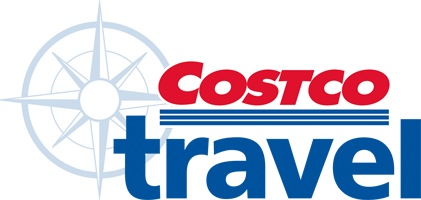
- Help Center
- 1-866-921-7925
Start Searching
- Packages
- Hotels
- Cruises
- Rental Cars
* Indicates required fields
Rental Period:
pickUpDate - dropOffDate
Pick-Up: pickUpTime - Drop-Off: dropOffTime
Pick-Up Location:
pickUpAddress
pickUpAgencyName
pickUpAgencyAddress
Drop-Off Location:
Same as Pick-Up Location
dropOffAddress
dropOffAgencyName
dropOffAgencyAddress
Coupon Override
Please call.
For drivers under the age of 25, additional fees and/or restrictions may apply.
For information and assistance in completing your reservation, please call:
We're unable to find your location.
Alaska Cruise Tours:
A cruise tour is a voyage and land tour combination, with the land tour occurring before or after the voyage. Unless otherwise noted, optional services such as airfare, airport transfers, shore excursions, land tour excursions, etc. are not included and are available for an additional cost.
Book Now. Pay Later.
Low price finder™, rental cars.
- Exclusive Member Rates
- No Cancellation Fees
Choose Your Adventure
Europe by land or sea.
- Limited-Time Deals, Cruises and More
- Included Extras or a Digital Costco Shop Card
Exciting Adventures
North american vacations.
- Choose the Way You Want to Travel
- Vacation Package or Build Your Package

Family-Friendly, All-Inclusive Resort
Grand fiesta americana package.
- Unlimited Meals, Wine and Spirits
- Up to $250 Instant Savings
- Digital Costco Shop Card
Pamper Yourself in Paradise
Hawaii wellness resorts.
- Choose from Four Islands
Luxury Ships, Timeless Elegance
Buyer's choice voyages.
- Exclusive Costco Member Savings
- Digital Costco Shop Card with Every Sailing

Digital Costco Shop Card Vacations
Receive a Digital Costco Shop Card with Select Vacation Packages and All Cruises
Limited-Time Deals
Book Before They're Gone These Deals Won't Last
ADVENTURES BY DISNEY®
Guided Group Itineraries Across Six Continents Recieve a Digital Costco Shop Card
Give Mom the Gift of Travel
Relax and Indulge with One of These Vacation Packages Hawaii, Mexico, the Caribbean and More
Dominican Republic: Hyatt Ziva Cap Cana Package
Family-Friendly, All-Inclusive Beachfront Resort Digital Costco Shop Card
Children's Miracle Network Hospitals
Change Kids' Health. Change the Future. Donate Online
Featured Travel
Cancun: grand fiesta americana coral beach package.
All-Inclusive Resort Digital Costco Shop Card Coral KidZ Club
Family-Friendly Fun
Vacations for All Ages Value, Quality and Features with Families in Mind
Oahu: Hilton Hawaiian Village® Waikiki Beach Resort Package
Daily Resort Fee Included Updated Tapa Collection Room with Savings Family-Friendly, Beachfront Resort
Costa Rica: The Westin Reserva Conchal Package
All-Inclusive Resort $50 Spa Credit Westin® Kids Club
North America Vacations
Stay Close to Home or Get Out and Explore Vacation Packages, Hotel Only Bookings or Build Your Own Package
San Antonio: The Westin Riverwalk, San Antonio Package
Daily $20 Food Credit Welcome Drinks for Two
Featured Destinations
Zion national park area.
Explore the Great Outdoors
South Lake Tahoe, California
Beautiful Mountain Getaway
Washington D.C.
The Nation's Capital
Featured Cruises
Bahamian cruise.
Disney Cruise Line Round-Trip Port Canaveral 4-Night Cruise Aboard Disney Wish Digital Costco Shop Card Courtesy of Costco Travel
Alaskan Explorer Cruise
Holland America Line | Eurodam® Digital Costco Shop Card, Round-Trip Seattle
7 Nights from $349*
Greece, Italy and Turkey Cruise
Celebrity Cruises | Celebrity Ascent℠ Digital Costco Shop Card, Round-Trip Rome
11 Nights from $1,790*
Cabo, Vallarta and Mazatlán Cruise
Royal Caribbean | Navigator of the Seas® Digital Costco Shop Card, Round-Trip Los Angeles
7 Nights from $491*
Mexican Riviera Cruise
Disney Cruise Line Round-Trip San Diego 7-Night Cruise Aboard Disney Wonder Digital Costco Shop Card Courtesy of Costco Travel
Hawaii Inter-Island Cruise
Norwegian Cruise Line | Pride of America Digital Costco Shop Card, Round-Trip Honolulu
7 Nights from $1,428*
Hidden Gems
Trending now, think costco travel first.
- Exclusively for Costco members
- We are Costco and we know travel
- The value you want with the quality you expect
- No surprises when you're ready to pay
- Additional advantages of membership
Learn more about the Costco Travel difference.

- Executive Members earn an annual 2% reward
- 3% cash back rewards on Costco Travel with the Costco Anywhere Visa® Card by Citi
Click here to maximize your rewards.
Explore More Travel
Spring into aloha.
Discover the Vibrant Island of Oahu
Special Packages with Added Value
Find Your Ideal Stay
Stay with Marriott International on Your
Next Visit to Vail, Lake Tahoe and More
Maui: Wailea Beach Resort
Daily $50 - $100 Resort Credit, Complimentary
Self-Parking and More
Travel Items on Costco.com
Shop costco wholesale, headphones & earbuds.
We are processing your payment.
Do not refresh your browser or exit this page.
- Credit cards
- View all credit cards
- Banking guide
- Loans guide
- Insurance guide
- Personal finance
- View all personal finance
- Small business
- Small business guide
- View all taxes
You’re our first priority. Every time.
We believe everyone should be able to make financial decisions with confidence. And while our site doesn’t feature every company or financial product available on the market, we’re proud that the guidance we offer, the information we provide and the tools we create are objective, independent, straightforward — and free.
So how do we make money? Our partners compensate us. This may influence which products we review and write about (and where those products appear on the site), but it in no way affects our recommendations or advice, which are grounded in thousands of hours of research. Our partners cannot pay us to guarantee favorable reviews of their products or services. Here is a list of our partners .
How the Mobile Passport Control App Works

Many or all of the products featured here are from our partners who compensate us. This influences which products we write about and where and how the product appears on a page. However, this does not influence our evaluations. Our opinions are our own. Here is a list of our partners and here's how we make money .
Table of Contents
Who can use the Mobile Passport app?
Where can you use the mpc app, can i add family members, what if i paid for the premium version of the old mobile passport app, the bottom line about mobile passport.
Mobile Passport Control, or MPC, expedites the customs and immigration process for U.S. and Canadian citizens at U.S. border entry checkpoints. By using the MPC app, people can avoid filling out paper customs declaration forms and bypass customs and immigration kiosks at U.S. airports and cruise terminals.
Once known as the free Mobile Passport app operated by Airside Mobile, that has been discontinued in favor of the Mobile Passport Control app now run by U.S. Customs and Border Protection, or CBP. The app is free, does not require preapproval and is available from the Google Play Store and Apple App Store.
Mobile Passport doesn’t replace a traditional passport, but it does expedite the required documentation needed. You show your phone’s QR code generated through the app along with your passport.
Mobile Passport Control is an app for U.S. citizens with a valid passport as well as Canadian B-1/B-2 citizens visitors. The app is free to download without the need for an application process. You don’t need a background check, interview or preapproval.
The MPC app does not provide entry to Trusted Traveler Programs like TSA PreCheck or Global Entry. However, if you have Global Entry, you can also use the MPC app if you prefer.
» Learn more: TSA PreCheck or Global Entry: Which is right for you?
The Mobile Passport Control app is simple to use. Once your plane lands or cruise arrives, you complete the online form. If you have just landed, you can enter the required information while taxiing to the gate.
It’s best if the app is downloaded before your flight. Then, users connect to wireless internet or a data signal. Next, they will be prompted to enter personal details like passport number, birthday, name, gender and citizenship.
The encrypted Mobile Passport Control app uses a pin or touch/face ID via the settings on a mobile device. It will require taking a photo and completing the questions on the form.
The app transmits this encrypted data to Customs and Border Protection so that when you scan the QR code at the immigration counter or your passport is swiped, your answers automatically appear. This saves time and paper.
A growing number of airports and cruise ports have access to Mobile Passport Control. So travelers can save time because they have already submitted their declaration form via the app and can go directly to an immigration booth.
Some airports have individual lines that speed MPC users to the front instead of making them wait. Others blend users into one line, which can be disappointing when lines are long. When there is a dedicated lane for MPC users, it can be almost as fast (or faster) than Global Entry lines.
While CBP personnel may ask additional questions, the processing can be much faster than the general arrival lanes.
» Learn more: Mobile Passport vs. Global Entry
Mobile Passport Control is available at 46 locations, which includes 33 U.S. international airports, nine pre-clearance locations and four cruise ports.
» Learn more: The best travel credit cards right now
Yes, the MPC app allows you to build profiles for as many as 12 people, and for those who live in the same household, profiles can be submitted in one transaction.
Previous Mobile Passport users were able to pay for a premium version that stored personal details like passport number, expiration date and a personal photo.
While the new MPC app is free, those who paid for a premium Mobile Passport plus version can continue to access the stored data until their original subscription expires. Those who paid an automatic renewal fee are no longer charged this from the app store.
» Learn more: Need a passport for a trip? Give yourself a big time cushion
International travelers returning to the U.S. will find the MPC app to be a great alternative to Global Entry, which has an extra cost and takes time to apply for before being approved. For that reason, it may not make sense for infrequent travelers.
Instead, the Mobile Passport Control app — and the shorter line in many locations — becomes the better option for those who want maximum convenience.
How to maximize your rewards
You want a travel credit card that prioritizes what’s important to you. Here are our picks for the best travel credit cards of 2024 , including those best for:
Flexibility, point transfers and a large bonus: Chase Sapphire Preferred® Card
No annual fee: Bank of America® Travel Rewards credit card
Flat-rate travel rewards: Capital One Venture Rewards Credit Card
Bonus travel rewards and high-end perks: Chase Sapphire Reserve®
Luxury perks: The Platinum Card® from American Express
Business travelers: Ink Business Preferred® Credit Card

on Chase's website
1x-5x 5x on travel purchased through Chase Travel℠, 3x on dining, select streaming services and online groceries, 2x on all other travel purchases, 1x on all other purchases.
75,000 Earn 75,000 bonus points after you spend $4,000 on purchases in the first 3 months from account opening. That's over $900 when you redeem through Chase Travel℠.

1.5%-5% Enjoy 5% cash back on travel purchased through Chase Travel, 3% cash back on drugstore purchases and dining at restaurants, including takeout and eligible delivery service, and unlimited 1.5% cash back on all other purchases.
Up to $300 Earn an additional 1.5% cash back on everything you buy (on up to $20,000 spent in the first year) - worth up to $300 cash back!

on Capital One's website
2x-5x Earn unlimited 2X miles on every purchase, every day. Earn 5X miles on hotels and rental cars booked through Capital One Travel, where you'll get Capital One's best prices on thousands of trip options.
75,000 Enjoy a one-time bonus of 75,000 miles once you spend $4,000 on purchases within 3 months from account opening, equal to $750 in travel.

- Travel Updates
Massive glitch causes airport chaos across UK
Images show thousands of fuming travellers waiting for their passports to be checked manually across all UK airports following a huge IT glitch.
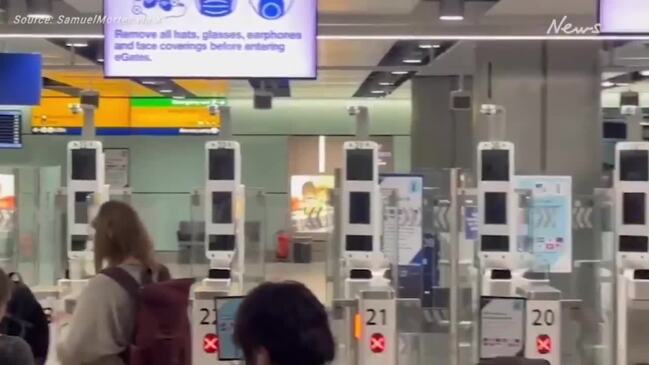
Bombshell new theory on Titan sub disaster

Murdered surfers story ‘doesn’t add up’

Labor a ‘mess’ amid new boat arrivals
All UK airports are experiencing an e-gate outage causing massive travel chaos.
Heathrow, Gatwick and Manchester are among tens of airports experiencing huge queues and long wait times because of a Border Control IT glitch.
Tens of thousands of travellers landing home after holidays are now stuck at passport control.
Images show thousands of fuming British citizens waiting for their passports to be checked manually because of the IT glitch.

One person wrote on X: “At Heathrow stuck in a very long queue having got off a plane and doing necessary checks the other side.
“The computers are down without a contingency plan which is surprising.
“Passengers are very tired. Women and children are being prioritised. Rep using small speaker.”
Another added: “Woohoo, landed back in Manchester Airport to find huge queues for passport control.
“E gates are down country wide … The joys of technology. Great when it works.”
A third said: “Shambles at Gatwick airport this evening.
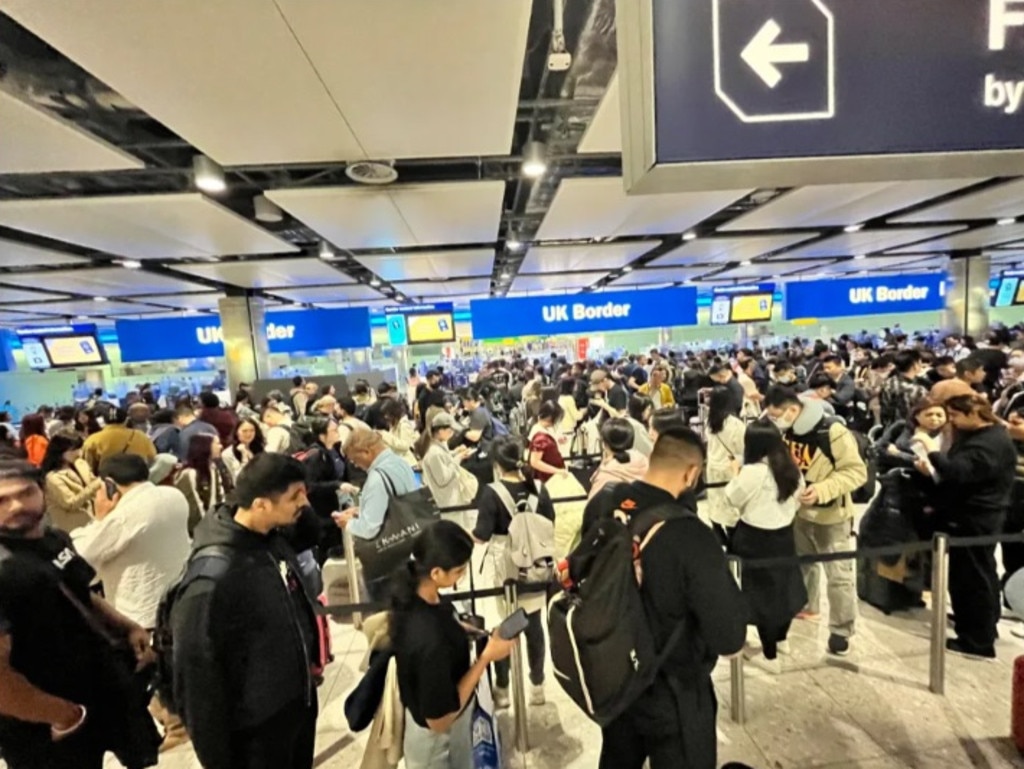
“Hour long passport control with no one manning the queues with people joining the queue from all directions.
“Really poor management of the situation.”
Ryanair customers due to land in the UK were warned via their app.
The notification read: “Please be advised that the Electronic Passport gates are temporarily unavailable at all UK Airports.
“You may experience extended queue times at passport control in airports in the United Kingdom as a result of this outage.”
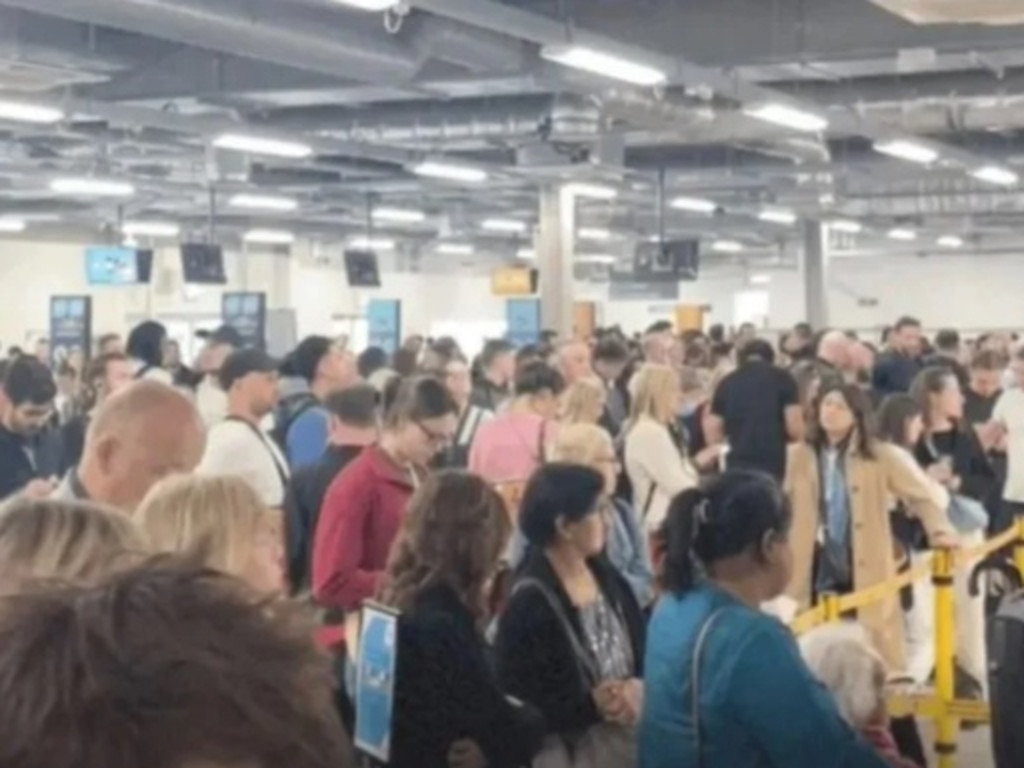
The notification read: ‘Please be advised that the Electronic Passport gates are temporarily unavailable at all UK Airports.
‘You may experience extended queue times at passport control in airports in the United Kingdom as a result of this outage.’
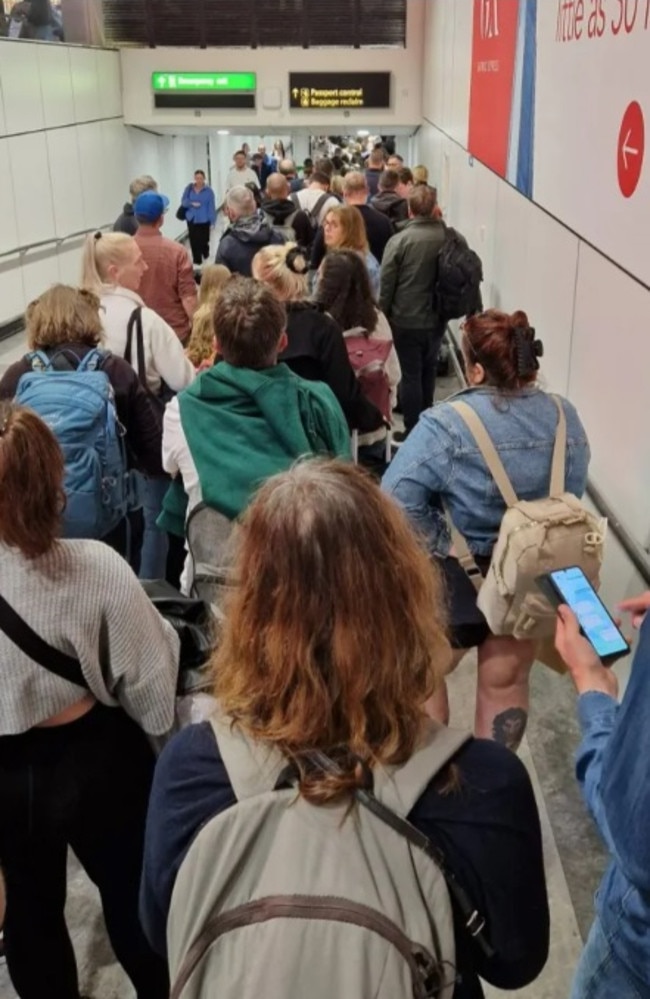
A Heathrow spokesperson told The Sun: “Border Force is currently experiencing a nationwide issue which is impacting passengers being processed through the Border.
“Our teams are supporting Border Force with their contingency plans to help resolve the problem as quickly as possible and are on hand to provide passenger welfare.
“We apologise for any impact this is having to passenger journeys.”
A spokesperson for Manchester Airport said: “We are aware of an issue with UK Border Force’s systems across the country, affecting a significant number of airports.
“Our Resilience Team and customer services colleagues are supporting passengers while UK Border Force and the Home Office fix the issue.”
More Coverage

The disruption comes after Border Force workers staged a four-day strike at Heathrow in a dispute over working conditions last week.
The union said the workers were protesting against plans to introduce new rosters they claim will see around 250 of them forced out of their jobs at passport control.
This article originally appeared on The Sun and was reproduced with permission
Researchers have a new theory as to what caused the infamous Titan submersible implosion, killing all five people on board.
The Mexican police’s version of events as to what led to the murder of two Aussie brothers and their American friend appears shady to those who know the area.
Calls for the Prime Minister to sack a key minister are growing after a group of men were detained for breaching Australia’s border.
11 Best Odor Eliminators of 2024, Tested and Reviewed by Cleaning Experts
Rid your home, shoes and car of the stinkiest smells with these sprays, candles and gels.

We've been independently researching and testing products for over 120 years. If you buy through our links, we may earn a commission. Learn more about our review process.
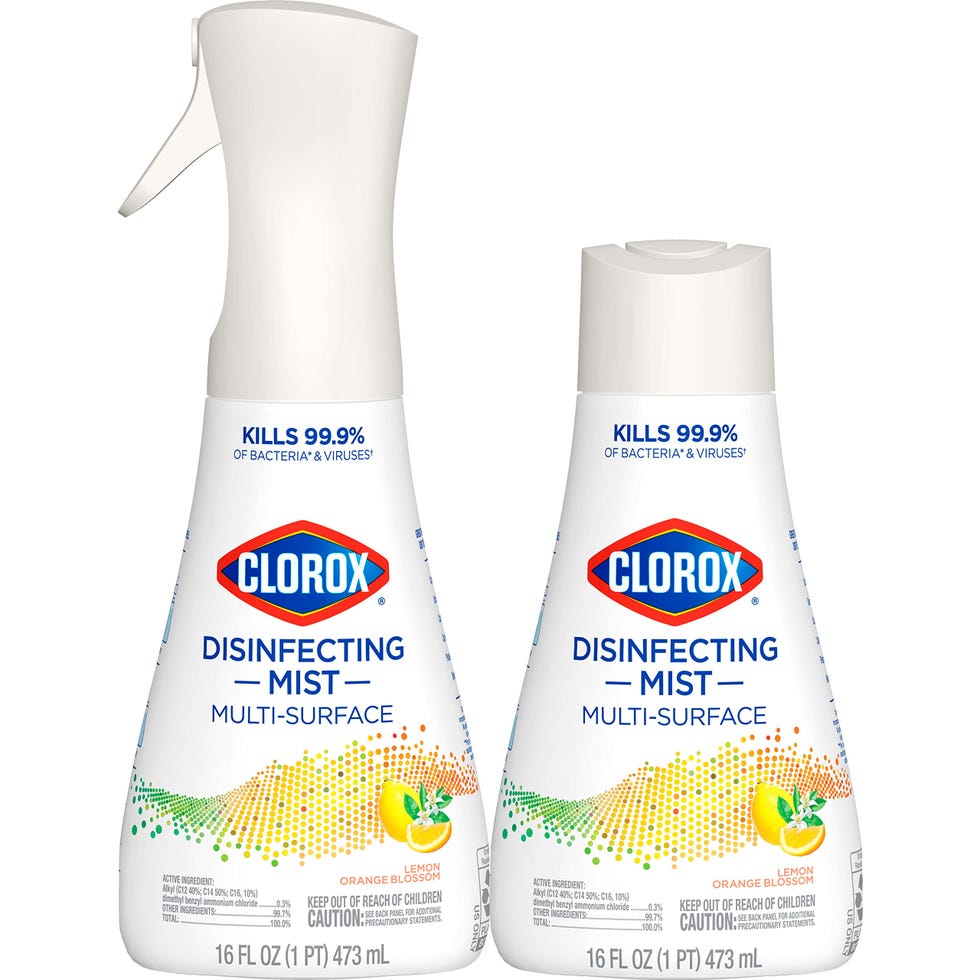
Best Overall Odor Eliminator
Clorox disinfecting mist.
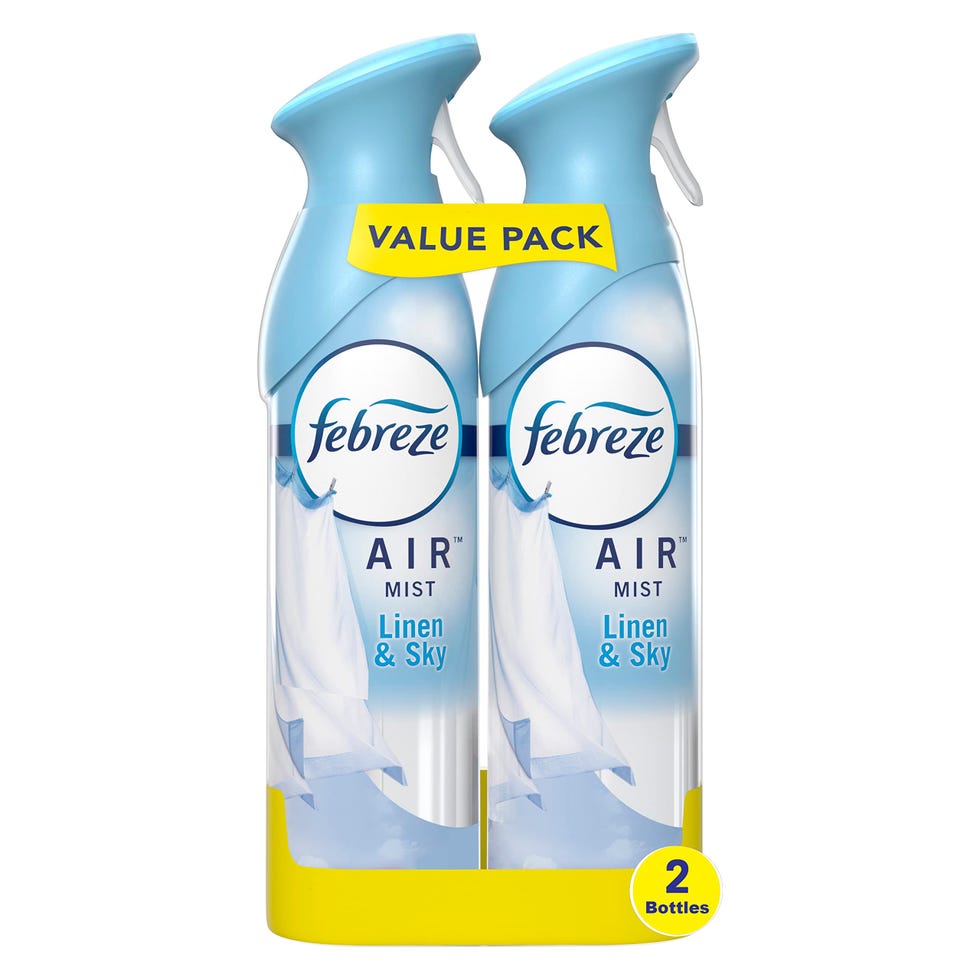
Best Value Odor Eliminator
Febreze odor-fighting air freshener.

Best Odor Eliminator for Bathroom Odors
Poo-pourri before-you-go toilet spray.
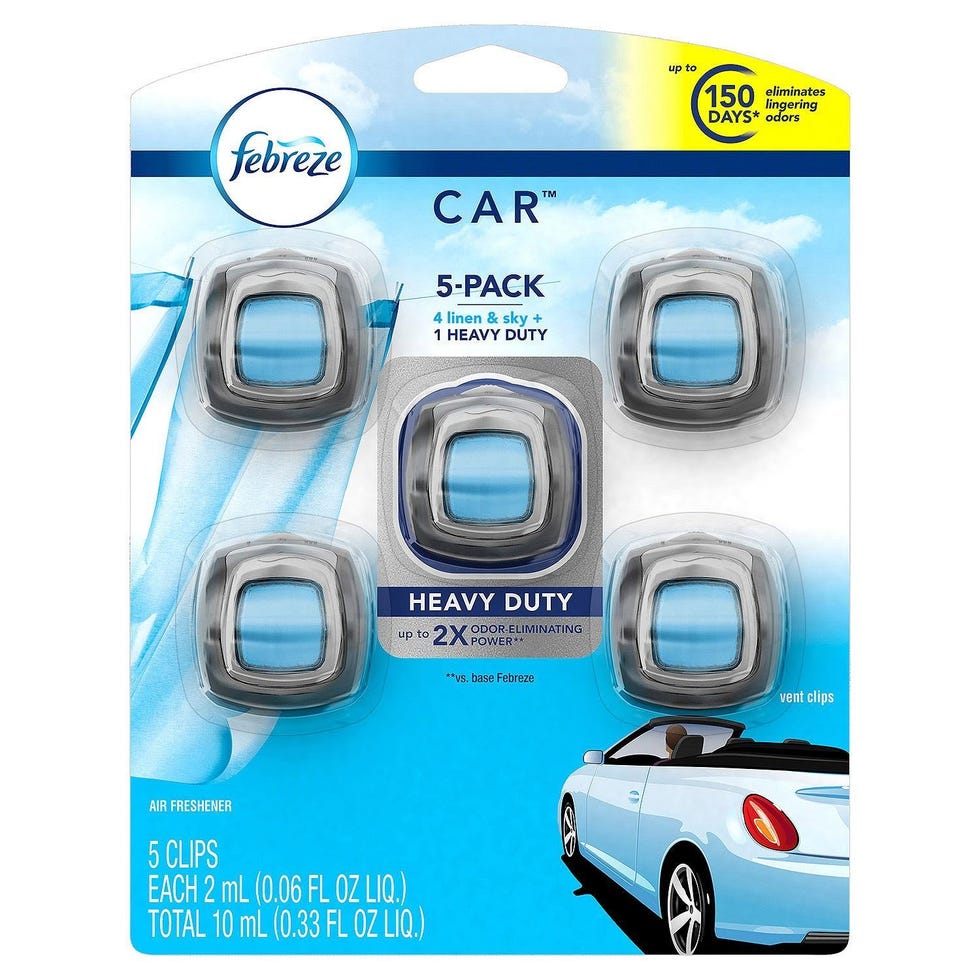
Best Odor Eliminator for Car Odors
Febreze car air freshener.
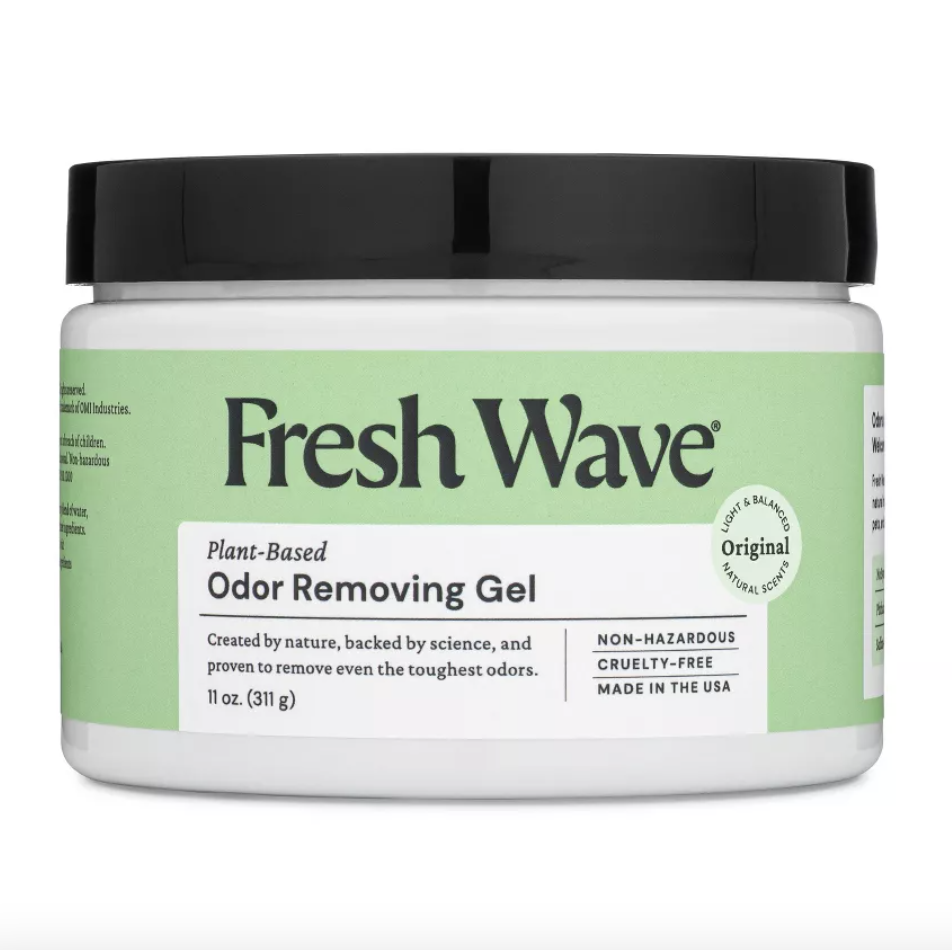
Fresh Wave Odor Removing Gel
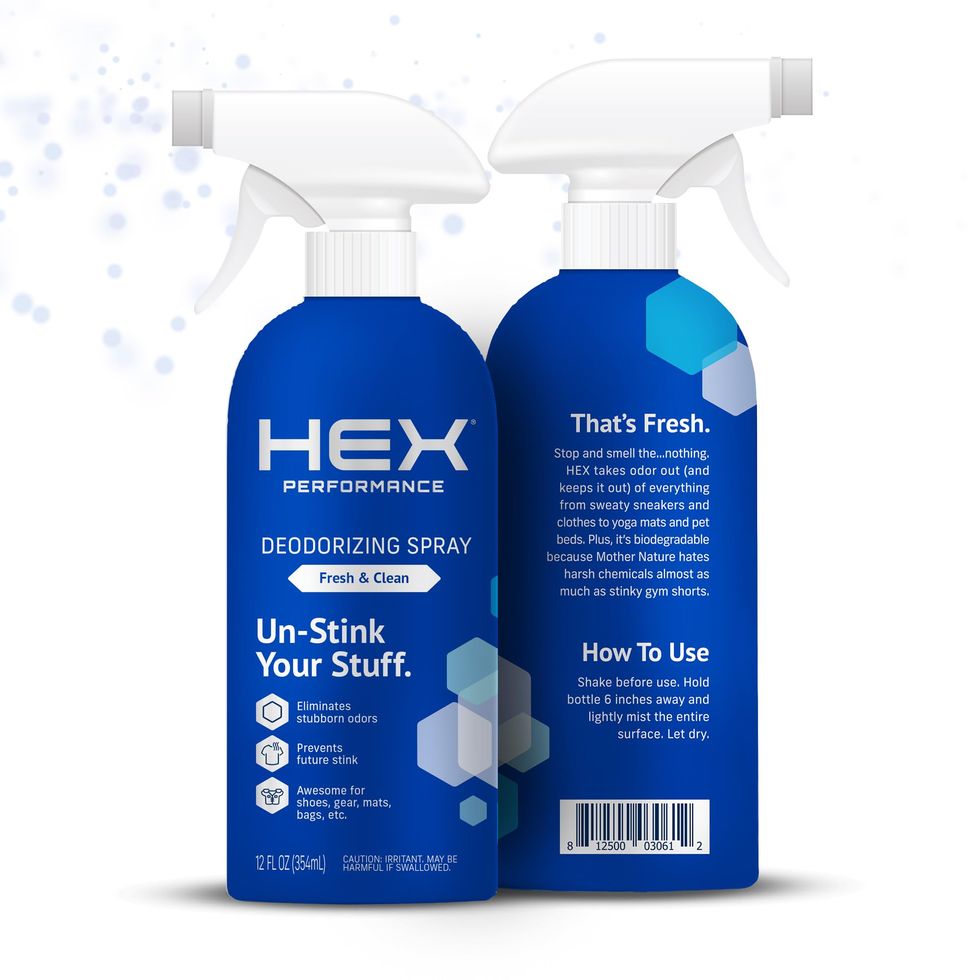
Best for Shoes
Hex performance deodorizing spray.

Best Odor Eliminator for Pet Odors
Febreze fabric refresher pet odor eliminator.
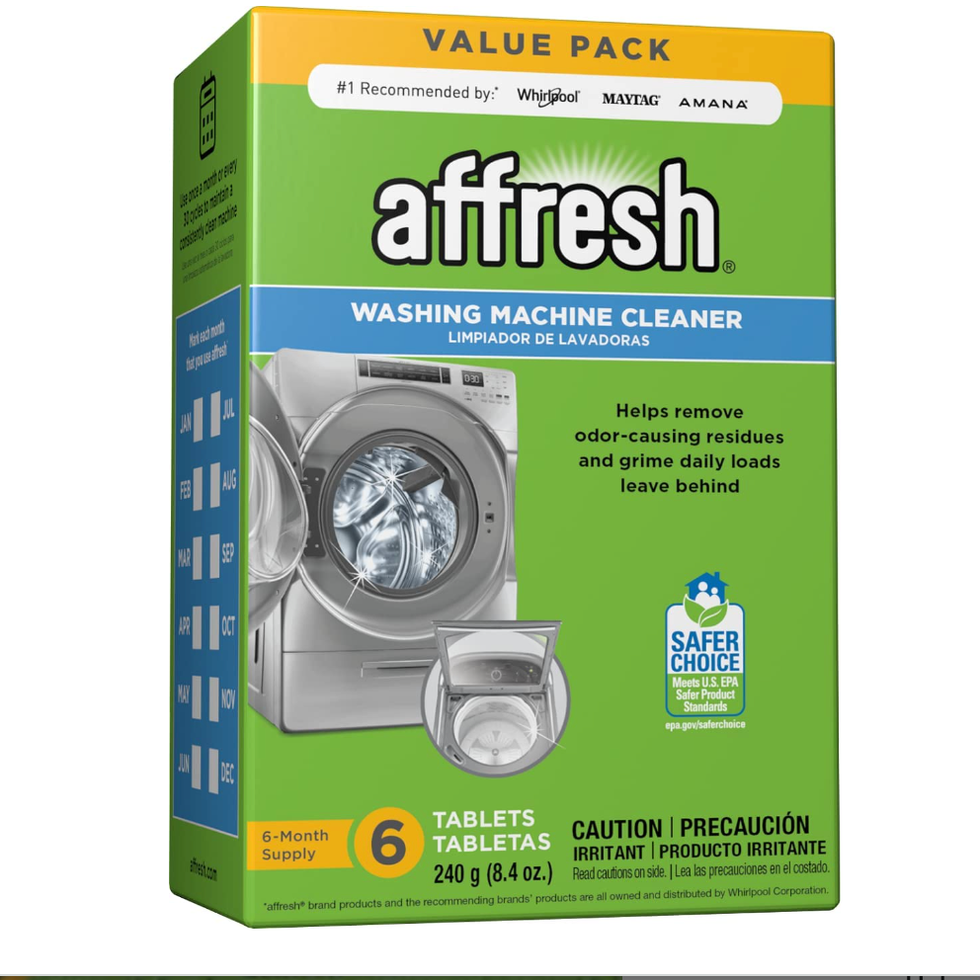
Best Odor Eliminator for Washing Machine Odor
Affresh washing machine cleaner.
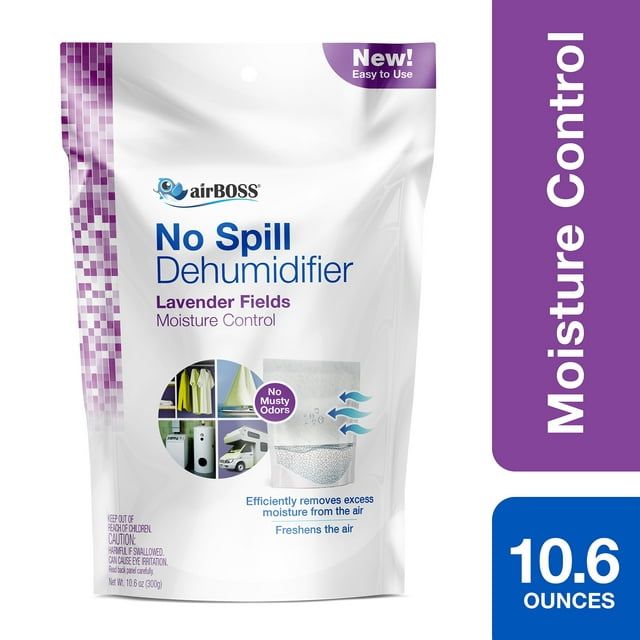
Best for Musty Closet Odors
Airboss no spill dehumidifier.
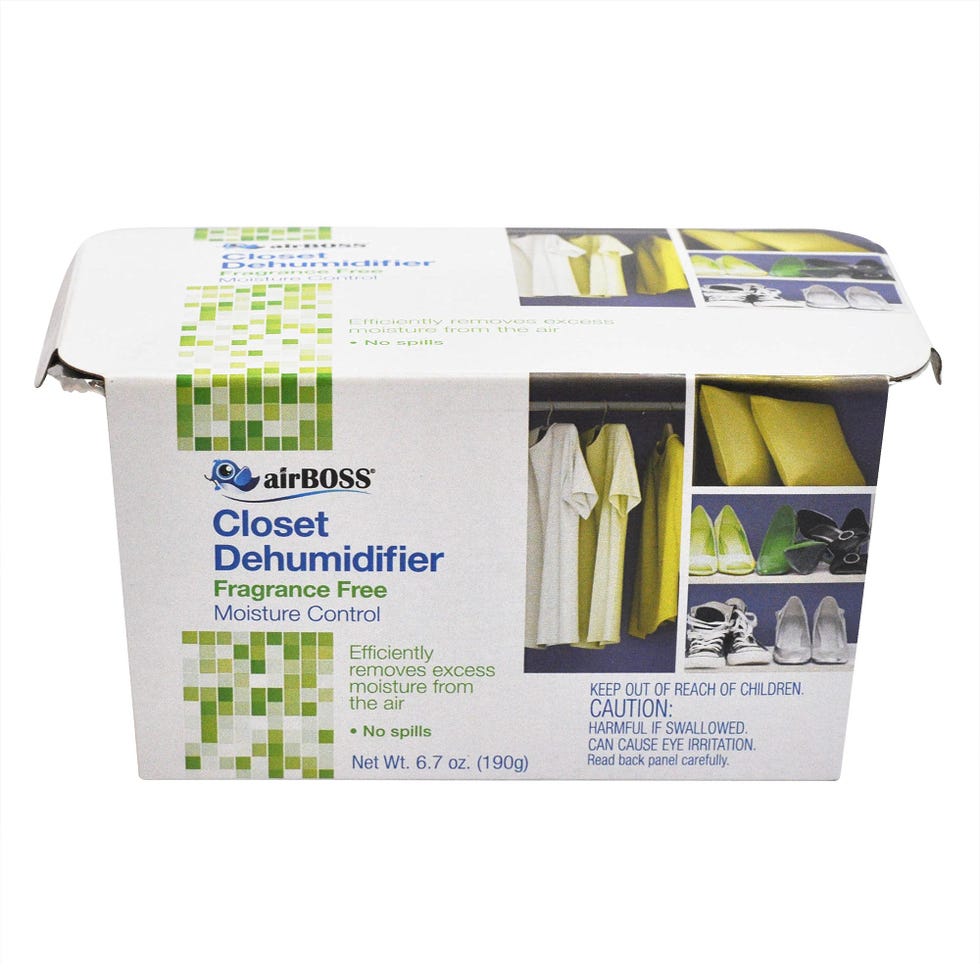
Best Odor Eliminator for Musty Closet Odors
Airboss closet dehumidifier.
In the last couple of years alone, we've tested over 30 odor-removing products for all types of odors and for all around the house, including the best air purifiers . When we test odor eliminators in the Good Housekeeping Institute Cleaning Lab , we evaluate them against cooking odors in our many kitchens, musty odors that we create in the Lab and pet and clothing odors from smelly items our staff donates. In addition, we review the labeling for any necessary safety warnings and thoroughness and clarity of the directions. Finally, we take note of how long they remain effective. To supplement our Lab testing, we send the products home with GH staffers for testing against real-life household odors.
After checking out our best odor eliminator picks, scroll down to find out more about how we test them, what makes odor eliminators different from air fresheners and why you should trust Good Housekeeping recommendations.
One thing you can count on is wherever you find bacteria, you usually have odors. Think of the kitchen trash can, bathroom toilet and your pet's bedding and toys. As bacteria flourishes on these items, so do odors. Clorox's Disinfecting Mist has earned the top spot on our list of odor eliminators because of its ability to kill bacteria and viruses (including the SARS-CoV2 virus) on hard surfaces, kill bacteria on soft surfaces and freshen the air.
This EPA-registered versatile mist sanitizes upholstery, mattresses and plush toys in 5 minutes, disinfects bathroom fixtures and countertops in 10 minutes and deodorizes the air. In our tests, we like how evenly it covered surfaces without making them overly wet, and it left a clean, light, pleasant scent behind. Food-contact surfaces and children's and pets' toys will need a rinse after using this mist. We're testing a new Free & Clear version of this product now.
Febreze is so synonymous with odor removal that it's almost become a generic term. This GH Seal-star spray quickly tackles airborne cooking odors, smoke, must and more with its cyclodextrin technology that surrounds odor molecules and pulls them from the air. And all this performance comes at a great price, making it our Best Value pick.
The newest upgrade to Febreze Air Mist is that it now dispenses as an even finer mist to linger longer and pull more odors out of the air. In our testing, we found that cooking and bathroom odors were rendered unnoticeable and stale spaces smelled fresh again very quickly. Just be sure to wipe away any excess that lands on hard floors as it can make them slippery.
While there are imitators now on the market, Poo-Pourri was the original in-toilet odor-eliminating spray and, in our opinion, it's still the best . Simply spritz three to five sprays onto the surface of the toilet water before you go, and it traps odors inside the bowl to prevent them from becoming airborne. We tested it both in our office bathrooms and at home with the same great results.
Made with essential oils and without alcohol, parabens or phthalates, it comes in an incredibly wide assortment of scents — some with incredibly cute names like Potty On. We like the discreet little bottles that make it easy to tuck into a bag for travel. Some scents are even available in larger refill sizes. Be sure to keep the bottles out of reach of children and pets.
A safer alternative to those distracting little tree air fresheners that hang from the rearview mirror, Febreze Car odor eliminators clip directly to a dashboard vent so they won't block your view. The air coming through the vent wafts over them to disperse the scent. We found them to be effective in every car we tested them in, and we like that the intensity of the scent can be dialed up or down as desired. They gave cars a fresh, pleasant scent that was noticeable the minute we stepped in, even before we turned on the ignition.
They can also be placed on the rear seat vents to combat odors from spilled foods, kids and pets riding in the back. Be aware, the scent can be a bit strong when you first clip them on, and some reviewers noted that the "heavy-duty" clip in this package didn't seem any different from the others.
If you like the "set it and forget it" approach to odor elimination, a gel could be just what you need. Simply peel back the foil top on this Fresh Wave jar and replace the vented lid. This allows the gel to work continuously and evaporate over time . In our tests, we found it removed lingering food and bathroom odors very well, and we like that it can be used in places where you can't use sprays, like inside a closet or microwave oven to extinguish a burnt popcorn smell.
The ingredients in Fresh Wave are plant-based and EPA Safer Choice-certified and refills of the gel can be purchased to replenish it as it evaporates. One jar claims to last up to 60 days in an area of up to 200 square feet. Larger areas may need multiple jars.
It has better amazon reviews. We haven’t specifically tested this, but we have tested other HEX products, like the detergent and love it. Stefani tested it for us too and says it removes the odors from her husband’s stinky workout clothes very well.
Pets are certainly lovable family members, but the messes they leave behind are anything but. Even if you bathe and brush them regularly, there's pet hair to remove plus, their favorite lounging spots, their bedding (and yours, if they sleep with you!) and toys can all smell dank and stale. But an even coating of Febreze Pet Odor Eliminator on these fabrics will neutralize stinky pet odors as it dries.
In our GH Seal tests, pet owners reported that it effectively removed odors on fabrics and even freshened the air to help camouflage the fact that there was a pet in the house, usually one of the first things arriving guests notice. It's easy and neat to use and works quickly. We also like that it's not just for pet odors. We found it works on cooking and smoke odors, too. For water-sensitive fabrics, be sure to test it on a hidden spot before spraying the entire item.
Front-loading washing machines clean well and save energy, but they have a dirty little secret — they can stink. Honestly, top-loaders can too, but front-loaders are the biggest offenders. Water that pools in the drum, door gaskets and dispenser drawers — if not dried promptly — can smell stale and even cause mold to grow. Plus detergent and fabric softener residues left behind can smell and transfer the odors to your laundry. Affresh Washing Machine Cleaner tablets are an easy and effective way to rid your appliance of unwanted odors.
Once per month, simply add one tablet to the drum and run a normal cycle (with hot water) or your machine's self-cleaning cycle, if it has one. The time-release tablet works throughout the entire cycle removing the residues bacteria feast on. It cleans the drum, pump, valves, hoses and more. In our tests, it left both front- and top-loading machines clean and fresh smelling.
We also like the list of months on the side of the box so you can check off each cleaning and keep track of when it's time to do the next one. We still recommend drying the gasket, door and dispenser drawer regularly, however, and you'll still have to occasionally remove and scrub the detergent dispenser as Affresh won't reach in there.
Musty closets don't just smell stale when you open the door. They can also make the clothes hanging inside smell musty too. So if you have a closet in a damp location (like a basement) or one that isn't opened often and doesn't get good air circulation, consider hanging this airBoss No Spill Dehumidifier on a hook to absorb the moisture that causes the odors. Simply remove the aluminum seal to expose the moisture-permeable film covering the moisture-absorbing beads inside. Then, hang the bag on a hook or place it on a shelf to enjoy a fresh-smelling closet.
As the beads pull in the moisture from the air, they turn to liquid. When all the beads are gone, simply pour the liquid down the drain and put a new airBoss in place.
I tested airBoss in my entryway coat closet where it worked great and kept the winter coats hanging in there smelling fresh and clean, even when the weather grew humid and warmer. Plus, it's easy to use and dispose of. Keep in mind this product is meant for smaller spaces like closets, laundry rooms, RVs and attics, so you will need more than one for larger areas.
Musty closets don't just smell stale when you open the door. They can also make the clothes hanging inside smell musty too. So if you have a closet in a damp location (like a basement) or one that isn't opened often and doesn't get good air circulation, consider placing this airBoss Closet Dehumidifier on the shelf to absorb the moisture that causes the odors. Simply remove the tub from the cardboard sleeve and peel back the foil to expose the moisture-permeable film covering the moisture-absorbing beads inside. As the beads pull in the moisture from the air, they turn to liquid. When all the beads are gone, simply pour the liquid down the drain and put a new airBoss in place.
We tested airBoss in an entryway coat closet with access to a damp crawl space where we noticed an obvious musty smell. It worked continuously and kept the coats hanging in there smelling fresh and clean. Plus, it's neat to use and dispose of. One online reviewer exclaimed, "I love this thing!" Large areas and very damp areas may need multiple tubs.
Diptyque La Droguerie Odor Removing Candle With Basil

We are still testing this odor-eliminating candle from Diptyque, but we love it so much already that we just had to include it here. Diptyque's luxury candle burns beautifully and smells divine but is also very hard-working. It replaces malodors with a combination of mint, basil and tomato leaf essential oils.
In our tests, two Cleaning Lab staffers each lit the candle after cooking a particularly pungent dinner and noticed an obvious clearing of the air just a short time later — even after leaving and returning home. It burns evenly and slowly, so though it's a bit pricey, it will last a long time and provide a lot of odor elimination for the cost, not to mention the warm glow it emits. As with all candles, never leave it burning unattended, and keep it away from children and pets. It would absolutely make a great gift!
Procter & Gamble Downy Rinse & Refresh Liquid Laundry Odor Remover and Fabric Softener Cool Cotton 48.00 fl oz

How we test odor eliminators
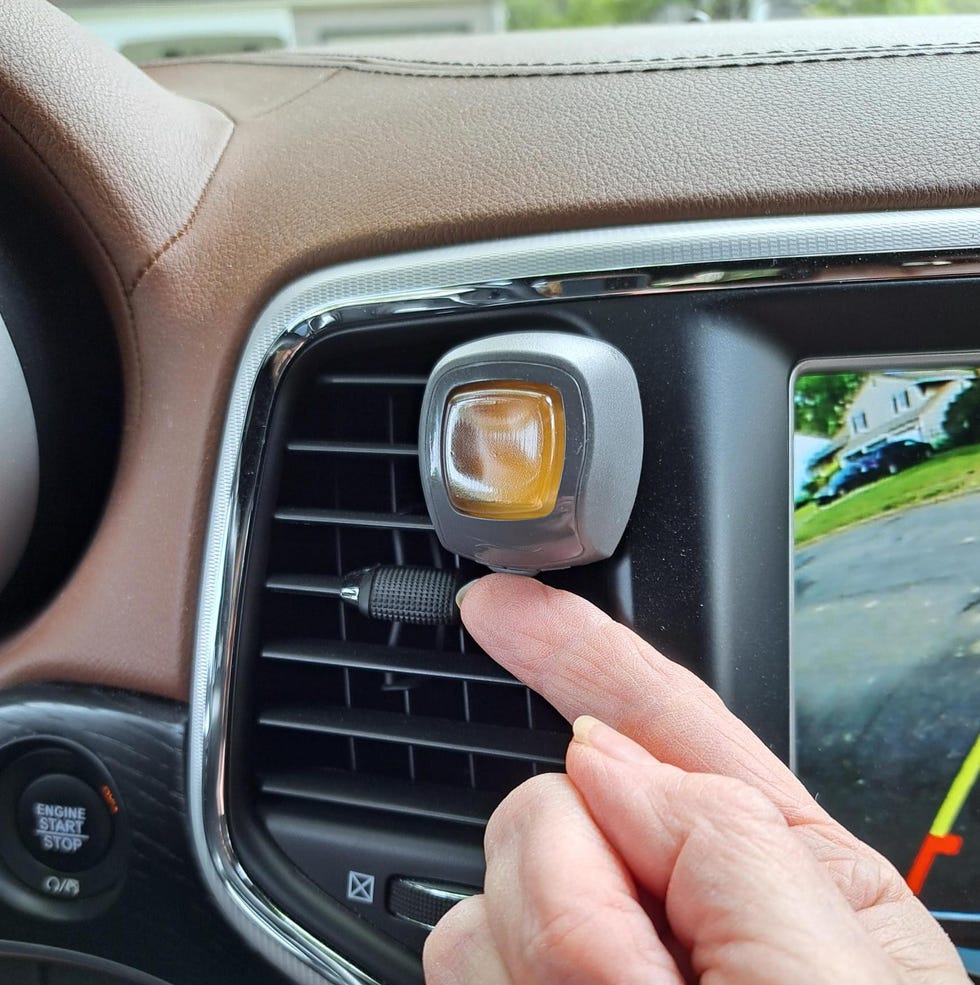
Odor eliminators can be tricky to test, especially in the expansive, wide-open spaces of our Good Housekeeping Institute Labs and Test Kitchens. The most accurate way to test them is in specially constructed small, climate-controlled "smell" chambers, where a measured amount of malodor and the test fragrance are introduced and trained smell testers rate the extent of odor removal. Since we don't have these types of chambers in our Labs, we evaluate odor eliminators the way consumers do: by using them in our day-to-day tasks both in the Lab and at home in our own cars, washing machines, kitchens, bathrooms, closets and more.

In the Lab, we cook stinky foods, make stinky garbage, put wet towels into plastic storage containers to make them smell musty and ask staffers for stinky pet toys and clothing items they'd like to donate for testing. We then call in staffers to smell these containers or the air before and after using the test products to rate the performance. We assess the chemical formulas, safety data sheets, packaging, labeling, scent strength and duration and ease of use and we review the manufacturer's documentation for the internal claim support testing they do. Finally, we have consumer testers use the products in their own homes and give us feedback via a detailed survey that is incorporated into our performance and ease-of-use tabulations.
What's the difference between an odor eliminator and an air freshener?

While both products make household odors less noticeable, many air fresheners simply cover up a bad smell with a floral or fruity one . That's why they often quickly fade and the malodor returns — it was never really gone in the first place. Essentially an air freshener's primary purpose is to do just that, freshen the air and impart a pleasant scent to it.
Odor eliminators use chemical, mechanical or physical means to actually trap and neutralize odor molecules so they are no longer perceptible to the human nose and can no longer return. Sanitizers and disinfectants work by actually killing the bacteria that cause the odors.
Check the label of any odor-removing product you are considering for an explanation of how it works and the types of odors it removes. If it doesn't say anything, it's likely just an air freshener designed to impart a pleasing fragrance.
Why trust Good Housekeeping?

Carolyn Forté has over 40 years of experience as a consumer products expert testing all kinds of products that both clean and remove odors from the air, fabrics, appliances and more. She has visited the testing facilities of air freshener manufacturers to see and experience firsthand the tests they conduct on their products to evaluate odor intensity and removal. Forté has also personally conducted air freshener research studies with consumers so she knows what they look for in scented cleaning products and air fresheners and presented the research findings at industry conferences and meetings.
Carolyn Forté brings more than 40 years of experience as a consumer products expert to her role as executive director of the Good Housekeeping Institute 's Home Care and Cleaning Lab. Using deep analytical testing and writing expertise in appliances, cleaning, textiles and organizational products, she produces cleaning and home care advice for GH, has authored numerous books and bookazines for the brand and partners with the American Cleaning Institute to co-produce the Discover Cleaning Summits. She holds a bachelor's degree in family and consumer sciences from Queens College, City University of New York.

@media(max-width: 64rem){.css-o9j0dn:before{margin-bottom:0.5rem;margin-right:0.625rem;color:#ffffff;width:1.25rem;bottom:-0.2rem;height:1.25rem;content:'_';display:inline-block;position:relative;line-height:1;background-repeat:no-repeat;}.loaded .css-o9j0dn:before{background-image:url(/_assets/design-tokens/goodhousekeeping/static/images/Clover.5c7a1a0.svg);}}@media(min-width: 48rem){.loaded .css-o9j0dn:before{background-image:url(/_assets/design-tokens/goodhousekeeping/static/images/Clover.5c7a1a0.svg);}} Product Reviews

The Best Air Purifiers

The Best Humidifiers
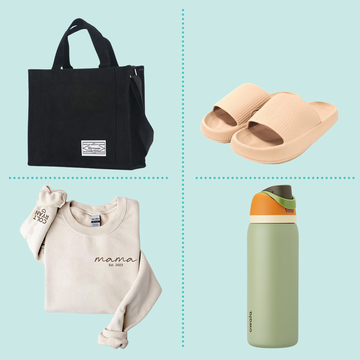
14 Most Popular Products of May 2024

The Best At-Home Hair Color Brands

The Best Stick Vacuums, Tested by Experts
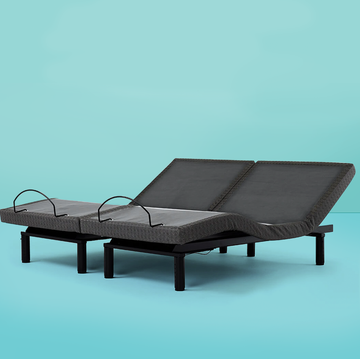
The Best Split King Adjustable Beds
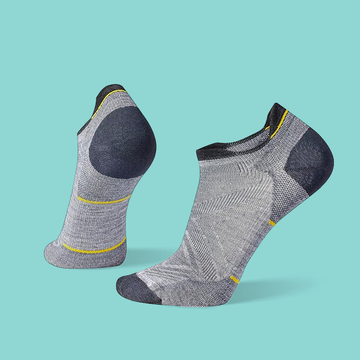
The Best Socks for Men

10 Best Korean Sunscreens of 2024

The Best Swimsuits on Amazon

The Best Window Air Conditioners for Your Home

The Best Irons for Clothes
Travel chaos at airports across UK - as London and Manchester confirm nationwide border issue
Both Stansted and Gatwick airports said the issue was related to e-gates at passport control.
By Claire Gilbody Dickerson, news reporter
Tuesday 7 May 2024 23:08, UK
Please use Chrome browser for a more accessible video player
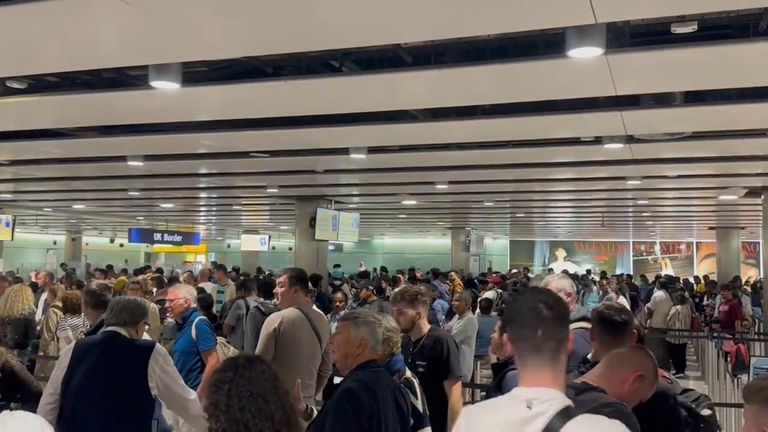
Chaos has been reported at airports across the UK - as several airports have confirmed a nationwide border issue.
A Heathrow spokesperson said: "Border Force is currently experiencing a nationwide issue which is impacting passengers being processed through the border.
"Our teams are supporting Border Force with their contingency plans to help resolve the problem as quickly as possible and are on hand to provide passenger welfare. We apologise for any impact this is having to passenger journeys."
UK airports confirmed to be affected by Border Force issue
London Heathrow
London Gatwick
London Stansted
Southampton
Follow latest: 'Queues only getting bigger' after London and Manchester a irports confirm nationwide issue
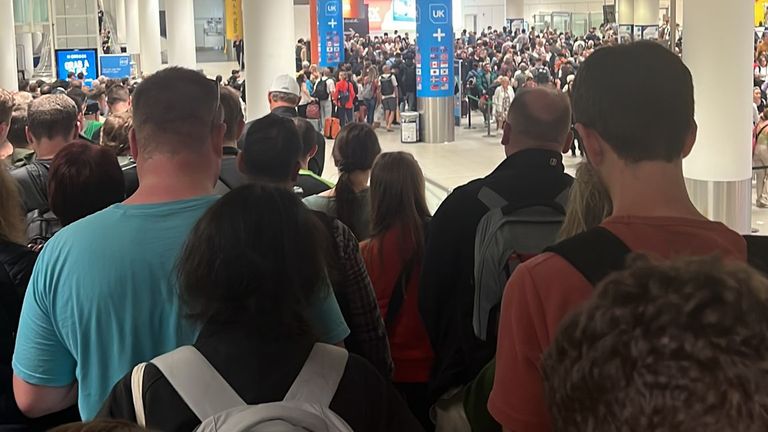
Manchester Airport also confirmed that the UK Border System is down as part of a nationwide outage.
Bristol Airport said on X it had also been affected by the issue as it warned passengers that "e-gates are not available and wait times may be longer than normal".
A spokesperson for AGS Airports which operates Aberdeen, Glasgow and Southampton airports has told Sky News they are impacted by the nationwide outage of the UK Border system.
The flights schedule means they are not currently affected by any queues, but Glasgow airport is due to have international arrivals later this evening.
The spokesperson said that if the situation continues they would expect passengers to be affected at Glasgow airport but contingency plans are in place and extra staff will be on hand to assist passengers.
A London Gatwick spokesperson said: "Some passengers may experience delays at immigration due to a nationwide issue with UK Border Force e-gates.
"Our staff are working with UK Border Force - who operate passport control including the e-gates - to provide assistance to passengers where necessary."
It said its teams are working to assist passengers in the airport.
Seems to be a UK nationwide airport system crash. No e gates working. This is the current queue in Gatwick airport with lots of children and no water #welcometotheuk pic.twitter.com/ckT21gJYXx — Rosie (@rxsiebo) May 7, 2024
A passenger at Gatwick Airport posted a video of the queues, saying on X that there were "lots of children and no water".
At Gatwick airport, the queue is over an hour long, with people being given no information on how long it may take for them to get through passport control, Sky News understands, while getting people on trains into London has also become an issue.
One passenger at Heathrow Airport said they had already been in the queue for an hour and it was "only getting bigger".
They added there had been "no communication" on how long it may take to resolve the issue.
Sky News correspondent Sadiya Chowdhury, reporting from Heathrow Airport, said one passenger had been in a queue for about three hours.
Last year, at the end of May, there were similar problems with e-gates and it took a day to resolve the issue as human officers had to check people's passports while the automated machines were out of service.
The country's air traffic system also suffered issues in August 2023 when a technical problem disrupted the National Air Traffic Service for several hours.
Long queues at Heathrow airport where passengers are being held at arrivals for a system failure. Been here already 1hour and the queue is only getting bigger. No communication given to anyone on what is the timeframe to sort this out. #welcomeback #heathrow #london #england pic.twitter.com/1BR71tetJh — A N D Y (@A_N_D_Y_3) May 7, 2024
Stansted Airport said on X: "UK Border Force is experiencing nationwide issues affecting e-gates at a number of airports, including London Stansted."
They said in a statement to Sky News: "Our operational and customer service colleagues are supporting passengers while UK Border Force and the Home Office fix the issue."
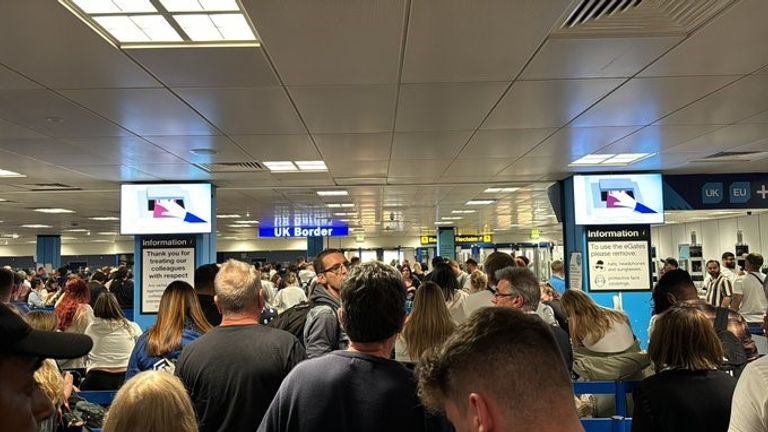
Edinburgh Airport said: "Border Force is experiencing a nationwide technical outage affecting UK airports.
"Although not in a peak arrivals period, some passengers may experience longer than normal waits at the Border while UKBF works to fix the issue." It added: "Thank you for your patience."
A Home Office spokesperson said: "We are aware of a technical issue affecting e-gates across the country.
"We are working closely with Border Force and affected airports to resolve the issue as soon as possible and apologise to all passengers for the inconvenience caused."
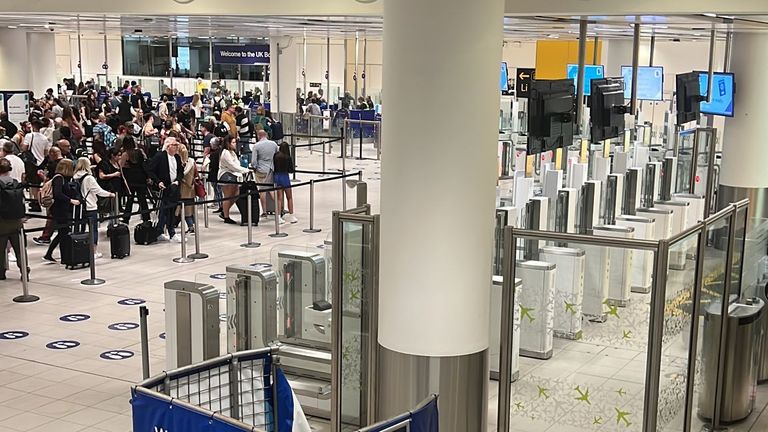
The disruption comes after Border Force workers staged a four-day strike at Heathrow in a dispute over working conditions last week.
The union said the workers were protesting against plans to introduce new rosters they claim will see around 250 of them forced out of their jobs at passport control.
Are you affected? Send us a message on WhatsApp or email [email protected] if you want to send us pictures and video.
By sending us your video footage/photographs/audio you agree we can broadcast, publish and edit the material and pass it on to others for similar use in any media worldwide, without any payment being due to you.
Related Topics
- Heathrow Airport
- Stansted Airport
You are using an outdated browser. Please upgrade your browser to improve your experience and security.
- Moneycontrol Trending Stock
- Infosys INE009A01021, INFY, 500209
- State Bank of India INE062A01020, SBIN, 500112
- Yes Bank INE528G01027, YESBANK, 532648
- Bank Nifty
- Nifty 500
- Mutual Funds
- Commodities
- Futures & Options
- Cryptocurrency
- My Portfolio
- My Watchlist
- FREE Credit Score ₹100 Cash Reward
- My Messages
- Price Alerts
- Chat with Us
- Download App
Follow us on:
- Pulitzer 2024 winners announced: See full list
ProPublica clinched the Public Service award for its revelatory reporting surrounding the US Supreme Court, exposing how billionaires gifted travel and other favours to justices.

The Pulitzer Prize is awarded by Columbia University.
The Pulitzer Prizes, administered by Columbia University in New York, garnered attention this year amid student demonstrations against the war in Gaza. The Pulitzer board conferred the awards celebrating excellence in journalism and literary works. Among this year's winners are publications like The New York Times and ProPublica, along with authors including Jayne Anne Phillips and Jonathan Eig.
The awards, presented across 15 journalism categories and eight arts categories encompassing books, music, and theatre, highlight exceptional contributions in public service, investigative reporting, feature photography, and more.
The Public Service award, considered the most esteemed, includes a gold medal, while other winners receive $15,000 in recognition of their exceptional work.
One of the standout moments of this year's Pulitzers was the acknowledgment of The Associated Press for its powerful feature photography capturing the global migration journey through Latin America to the US. Similarly, The New York Times and Reuters were honoured for their in-depth coverage of the Hamas-Israel war that occurred on October 7th and its aftermath.
ProPublica clinched the Public Service award for its revelatory reporting that "pierced the thick wall of secrecy" surrounding the US Supreme Court, exposing how billionaires gifted travel and other favours to justices. Special citations were also awarded to journalists covering the war in Gaza and the late hip-hop critic Greg Tate.
Related stories
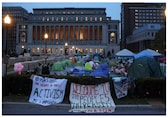
The New York Times staff was recognised for their comprehensive coverage of the October 7th Hamas attack, delving into intelligence failures and Israel's response in Gaza.
Additionally, Hannah Dreier of The Times secured a Pulitzer in investigative reporting for her stories on migrant child labour across the United States. Katie Engelhart's feature writing piece on a family grappling with a matriarch's dementia also earned her a Pulitzer.
The Washington Post earned accolades for its insightful national reporting on the AR-15 semi-automatic rifle, accompanied by photography. David E Hoffman's editorial series on digital age authoritarian repression also earned a Pulitzer for The Post.
In the literary realm, Jayne Anne Phillips' "Night Watch," a gripping mother-daughter saga set in a West Virginia asylum after the civil war, received the Pulitzer Prize for fiction. The drama prize was awarded to Eboni Booth's "Primary Trust," a compelling narrative about a bookstore worker's unforeseen journey after losing his job.
Nathan Thrall’s A Day in the Life of Abed Salama: Anatomy of a Jerusalem Tragedy won for general nonfiction, and Jacqueline Jones received the history prize for No Right to an Honest Living: The Struggles of Boston’s Black Workers in the Civil War Era.
Discover the latest business news , Sensex , and Nifty updates. Obtain Personal Finance insights, tax queries, and expert opinions on Moneycontrol or download the Moneycontrol App to stay updated!
Trending news

- The woman next to Sundar Pichai in this pic from IIT became the CEO of…
- Ex-Google AI chief who joined Microsoft In March praises Satya Nadella's leadership: 'Everyone is working hard'
- Pandas at Chinese zoo turn out to be dogs painted black and white
You got 30 Day’s Trial of

- Ad-Free Experience
- Actionable Insights
- MC Research
- Economic Calendar

You are already a Moneycontrol Pro user.

Access your Detailed Credit Report - absolutely free


IMAGES
VIDEO
COMMENTS
Travel Meetings Archive. If you have any questions or comments concerning this Travel Guide, please contact the Governor's Travel Control Board at (217) 782-2141, e-mail [email protected], or you may write to: Illinois Department of Central Management Services. State Travel Coordinator. Governor's Travel Control Board.
Learn about the different ways in which you can reduce travel, accommodation, transportation, and meal expenses. By implementing these best practices, you can reduce the cost of business travel expenses without causing inconvenience to your employees.
International travel control measures are methods to manage international travel to contain the spread of COVID-19. Measures include: closing international borders to stop travellers crossing from one country to another; restricting travel to and from certain countries, particularly those with high infection levels; ...
Cancellation of public events during COVID-19 pandemic. Chile: COVID-19 weekly death rate by vaccination status. Confirmed COVID-19 deaths per million vs. GDP per capita. Cumulative confirmed COVID-19 cases and deaths. Cumulative confirmed COVID-19 cases by world region By Region.
International travel control measures are methods to manage international travel to contain the spread of COVID‐19. Measures include: ‐ closing international borders to stop travellers crossing from one country to another; ‐ restricting travel to and from certain countries, particularly those with high infection levels;
International travel control measures are methods to manage international travel to contain the spread of COVID-19. Measures include: - closing international borders to stop travellers crossing from one country to another; - restricting travel to and from certain countries, particularly those with high infection levels;
International travel control (e.g., screening of inbound travelers, requiring quarantines, and even closing borders) has been a key strategy implemented by many countries to limit importations of severe acute respiratory syndrome coronavirus 2 (SARS-CoV-2). However, early in the coronavirus disease (COVID-19) ...
The World Health Organization (WHO) recommends that national authorities continue to apply a risk-based approach when implementing measures related to COVID-19 and international travel while respecting the dignity, human rights and fundamental freedoms of travellers.On 2 July 2021, WHO updated its international travel risk-based guidance and published two guidance documents, Policy ...
Mobile Passport Control (MPC) allows eligible travelers to submit their travel document, photo, and customs declaration information through a free, secure app on their smartphone or other mobile device. The use of MPC streamlines the traveler's entry process into the United States by reducing passport control inspection time and overall wait ...
Traffic control, supervision of the movement of people, goods, or vehicles to ensure efficiency and safety. Traffic control is a critical element in the safe and efficient operation of any transportation system. Operational procedures, rules and laws, and devices are some of the components of traffic control systems.
Therefore, quarantine and screening combined is possibly the most effective travel-control measure of the three options investigated in this review. However, by providing a vaccine status, countries may choose to avoid these measures. Lastly, for this review, one needs to consider that changes in the travellers' immunity as a result of ...
The Do Not Board and Lookout lists have been used for people with suspected or confirmed infectious tuberculosis (TB), including multidrug-resistant tuberculosis (MDR-TB), and measles. During 2020-2022, CDC used these authorities to restrict travel of people with COVID-19 and close contacts who were recommended to quarantine.
Abstract. Background: In late 2019, the first cases of coronavirus disease 2019 (COVID-19) were reported in Wuhan, China, followed by a worldwide spread. Numerous countries have implemented control measures related to international travel, including border closures, travel restrictions, screening at borders, and quarantine of travellers.
Objectives To comprehensively map the existing evidence assessing the impact of travel-related control measures for containment of the SARS-CoV-2/COVID-19 pandemic. Design Rapid evidence map. Data sources MEDLINE, Embase and Web of Science, and COVID-19 specific databases offered by the US Centers for Disease Control and Prevention and the WHO. Eligibility criteria We included studies in human ...
The Foreign Missions Act authorizes the Secretary of State to impose restrictions or conditions on the travel within the United States of certain members of foreign missions. For example, certain members of foreign missions are required to notify the Office of Foreign Missions prior to traveling beyond a 25-mile radius of the White House.
Travel. Almost a million times each day, CBP officers welcome international travelers into the U.S. In screening both foreign visitors and returning U.S. citizens, CBP uses a variety of techniques to assure that global tourism remains safe and strong. Descriptions of CBP processes and programs are available for first-time and frequent travelers.
During the coronavirus disease pandemic, international travel controls have been widely adopted. To determine the effectiveness of these measures, we analyzed data from 165 countries and found that early implementation of international travel controls led to a mean delay of 5 weeks in the first epidemic peak of cases. Keywords: 2019 novel ...
Here is a list of possible vaccines that you may need to get for the first time or boosters before you travel. COVID-19. Chickenpox. Cholera. Flu (Influenza) Hepatitis A. Hepatitis B. Japanese encephalitis.
30 ILCS 105/12-1. (30 ILCS 105/12-1) (from Ch. 127, par. 148-1) Sec. 12-1. Travel control boards. (a) The following travel control boards are created with the members and. jurisdiction set forth below: (1) A Travel Control Board is created within the. Office of the Attorney General consisting of the Attorney General as chairman and 2 members of ...
Prevention modalities: vaccination, medication, consultation. Hepatitis A. Contaminated food & water. Vaccination (2-dose vaccine): Recommended for most travelers. --Administer 2 doses, at least 6 months apart. --At least 1 dose should be given before travel. Consultation: Advise patient to wash hands frequently and avoid unsafe food and water.
To fast travel in Control you need to cleanse or claim Control Points across the Oldest House. This involves walking up to a Control point and interacting with it. The first time you do this will ...
During the coronavirus disease pandemic, international travel controls have been widely adopted. To determine the effectiveness of these measures, we analyzed data from 165 countries and found that early implementation of international travel controls led to a mean delay of 5 weeks in the first epidemic peak of cases.
Costco Travel offers everyday savings on top-quality, brand-name vacations, hotels, cruises, rental cars, exclusively for Costco members.
Mobile Passport Control is an app for U.S. citizens with a valid passport as well as Canadian B-1/B-2 citizens visitors. The app is free to download without the need for an application process ...
Some countries imposed relatively strict restrictions on air travel by reducing more than 90% of their daily flights when the WHO declared the COVID-19 outbreak a pandemic on 11 March 2020. Their travel restriction policies seem to have helped reduce the spread of COVID-19 worldwide, as we can see that the number of daily reported confirmed ...
Information about how to order the U.S. government publication about traveling titled "Health Information for International Travel" (also called the "Yellow Book"). Provided by the U.S. Centers for Disease Control and Prevention (CDC).
Heathrow, Gatwick and Manchester are among tens of airports experiencing huge queues and long wait times because of a Border Control IT glitch. Tens of thousands of travellers landing home after ...
We recommend the best, most effective odor eliminator sprays, gel, candle and more for removing odors from pets areas, the bathroom, shoes and even the car.
"Our staff are working with UK Border Force - who operate passport control including the e-gates - to provide assistance to passengers where necessary."
ProPublica clinched the Public Service award for its revelatory reporting surrounding the US Supreme Court, exposing how billionaires gifted travel and other favours to justices.